








MANAGING DIRECTOR
Tushar Sahoo tushar@gecmediagroup.com
CHIEF EDITOR
Arun Shankar arun@gecmediagroup.com
CO-FOUNDER & CEO Ronak Samantaray ronak@gecmediagroup.com
GLOBAL HEAD, CONTENT AND STRATEGIC ALLIANCES
Anushree Dixit anushree@gecmediagroup.com
EXECUTIVE DIRECTOR GEC MEDIA GROUP
CO-FOUNDER, BUSINESS TRANSFORMATION ASIA Sundip Sibal Sundip@gecmediagroup.com
GROUP SALES HEAD Richa S richa@gecmediagroup.com
PROJECT LEAD
Jennefer Lorraine Mendoza jennefer@gecmdiagroup.com
SALES AND ADVERTISING
Ronak Samantaray ronak@gecmediagroup.com
DIGITAL TEAM
Vijay Bakshi - IT Manager
DESIGNED BY Creative Lead
Ajay Arya
Designer
Rahul Arya
Assistant Designer
Vikas Chandra
PRODUCTION, CIRCULATION, SUBSCRIPTIONS info@gecmediagroup.com
PRINTED BY Kaizen Offset
3, DSIDC Complex, Okhla, Phase - I New Delhi - 110020
In this month’s lead feature, we look at some of the innovative processes that Ecom Express has built into its operations. Ecom Express began its operations in January 2013 with a footprint of 35 cities and 42 delivery centres in northern India, and clients like Myntra and Jabong.
We are unique in the sense that we created the delivery mechanism for e-commerce says Ecom’s Satyanarayana. Ecom Express is a B2B company, and operates with a B2C business model. It offers endto-end logistics services to the e-commerce industry, including lastmile delivery to consumers in the remotest part of the country.
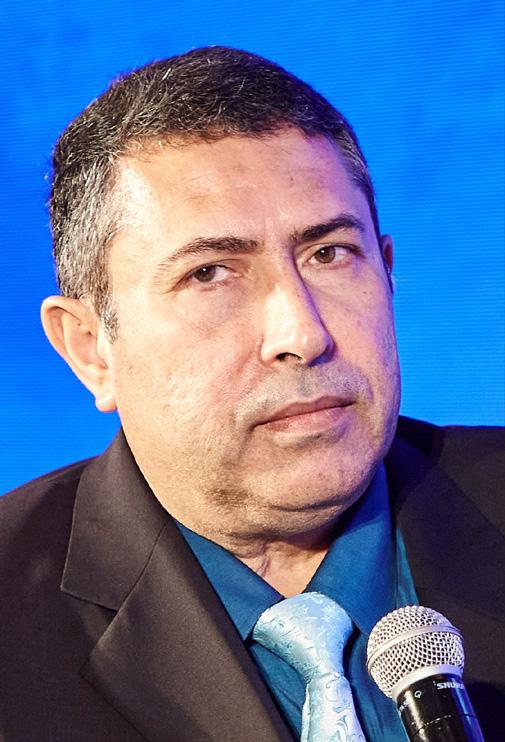
Under fulfilment services, Ecom Express offers warehousing and order management services, while the digital services include e-KYC-Aadhar-based biometric verification and industryspecific cash, cheque, and document collection and Contact Point Verification or CPV services.
It has an impressive client list of over 2,000 small and large e-commerce companies, including market leaders such as Amazon, Flipkart, Clovia, Myntra, Paytm, and Nykaa. It also provides services to companies from the banking, insurance, and financial sectors.
In our supporting feature, we profile how global crypto trader OKX is leveraging blockchain technology. OKX is the second largest crypto exchange by volume, offering retail and institutional customers spot, futures, margin, options, and perpetual swaps trading. Additionally, OKX’s product suite includes Earn, a tool for growing digital assets through staking and DeFi; a Web3 Wallet for self-custodian assets; an NFT marketplace; and more.
The core purpose of blockchain-based transactions and other crypto innovations is to address problems with the classical financial system, such as high costs, entry barriers, and data vulnerability. Blockchain is not necessarily a speed solution, but it is one of the most efficient and secure technologies for global transactions and easy accessibility for anyone on the planet.
The beauty of crypto is that it is unbiased and permissionless, says Lennix Lai from OKX. OKX is striving to eliminate financial barriers, helping to evolve the global economy, and change the world for the better. Crypto regulation is complex and varies significantly by jurisdiction.
We also present the post event coverage of The World CIO Summit 2022 roadshow into India and South East Asia.

Turn these pages to access our thought leadership columns, news-round up, and much more.
Best wishes for meeting your annual targets before the year ends.
Arun Shankar arun@gecmediagroup.com
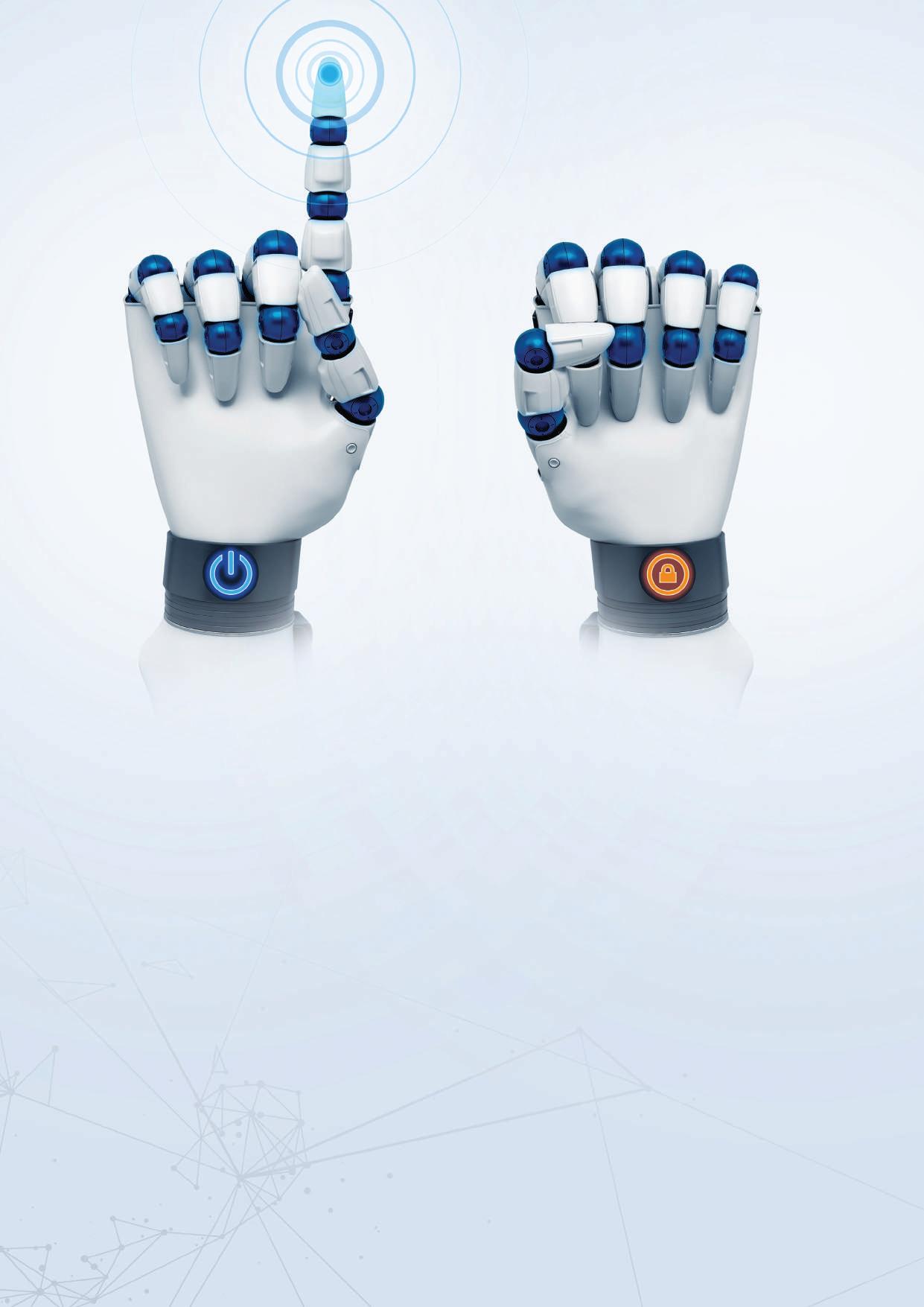


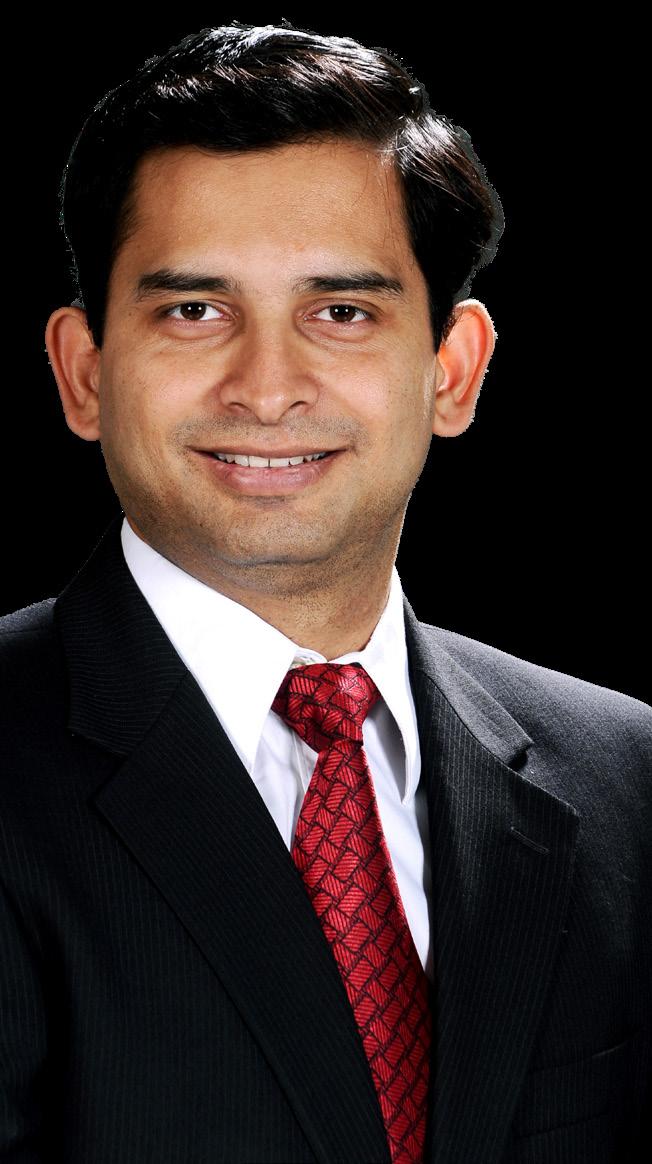
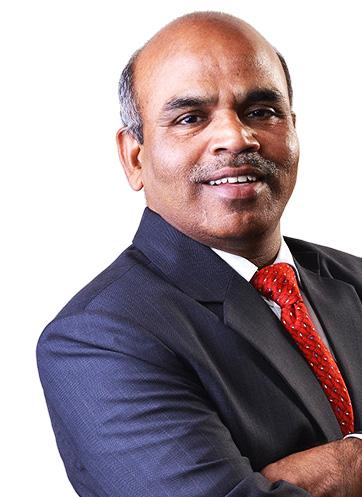



 BY MICHEL NADER
BY MICHEL NADER
Cybercrime is showing no signs of slowing down, posing risks across all aspects of society. According to the WEF Global Cybersecurity Outlook report 2022, last year ransomware attacks were up 150% and more than 80% of experts say this growth is now threatening public safety. These statistics demonstrate the gravity and prevalence of cybercrime today. The question
is, as we focus on global recovery, and a new era of economic growth, how do we protect against cyber threats?
In recent months we have seen an unprecedented policy focus on the threat of cyberattacks and digital resilience though prominence in WEF’s Global Risk Report for 2022, and the G7 communique that saw a formal agreement for governments to work together to share expertise and minimise cyber risks.
Small and Medium-sized
A key objective for public sector infrastructure is developing a cyber resilience strategy that can anticipate and quickly recover from significant disruption.
Enterprises are the backbone of local economies and yet are highly at risk. SMEs are seen as a key facet to trade and logistics, partner networks, and digital ecosystems, however, increasingly find themselves the target of cyberattacks.
Research shows that 43% of cyberattacks are made against small businesses, up from 18% just a few years ago. Significantly, recent WEF reports indicate that 88% of respondents are concerned about the cyber resilience of SMEs in their ecosystem.
It is essential that we work to support and protect such businesses, particularly as we look to build more resilient, balanced societies. SMEs, unlike other businesses, often require and are entitled to greater government support and nurture. Helping these smaller organisations protect themselves against the ever-growing cybersecurity threat must be a priority for public sector recovery strategists, in the months and years ahead.
It is now more important than ever that public sector infrastructure empowers business resilience to help identify, protect, detect, respond, and recover from a cyberattack. But even with strong cyber defences in place, it’s impossible for companies to avoid all cyber disasters and their resultant, adverse impacts upon data, privacy, and trust.
Therefore, another key objective should be developing a cyber resilience strategy that can anticipate and quickly recover from significant disruption. The real test should be how quickly and seamlessly organisations can return to business as usual.
One essential component of such resilience is to create and implement thorough cybersecurity training exercises amongst workforces. This not only prepares employees to identify security risks and lures, but also heightens awareness and reinforces the need for teamwork, skills, and collaboration across the whole organisation.
Cybersecurity should be at the forefront of public sector and business leaders’ minds. A comprehensive cybersecurity strategy that works in alignment between governments and industry is a key component to recovery for businesses, national economies, and citizens around the world.
Research shows that 43% of cyberattacks are made against small businesses, up from 18% just a few years ago
The real test should be how quickly and seamlessly organisations can return to business as usual
Cybersecurity is more than just an insurance policy against attacks. Cyber resilience, if implemented effectively, can help turbocharge long-term economic prosperity and innovation, and provide the digital defences crucial to our modern world.
In order to deliver on globally ambitious designs of digital inclusion, sustainability,
improved health outcomes, defence, and much more for the economies of tomorrow; cyber resiliency is a key building block and enabler.
The adverse financial impacts involved with cybercrime are seismic, and unsustainable for economies to absorb long-term. It’s no secret that advanced technologies such as Artificial Intelligence (AI), Machine Learning (ML) and IoT are the key building blocks for future progress, but perhaps ironically, it’s these same technologies that can present new opportunities for cyber criminals. The ultimate challenge will be securing such technologies and enabling more resilient, long-term solutions to the threats posed by cyber criminals. Economic rebalancing will only be equitable if these tools are accessible to all organisations and businesses. To make this vision a reality, the need for collaboration and support between the public and private sectors has never been more vital.
SME Cyber support vital for wider economy
At a profound level, it is a positive thought to think that we may have the answers to many of life’s unanswerable questions, it is right there in the data.
So often in the technology industry we talk about how data can benefit businesses. And rightly so because data is arguably the most valuable asset a business has. However, we do not always talk enough about how data makes life better for people. When ultimately, this is its purpose.
A great example of this comes from a personal story about how a group of fellow technical scuba-diver friends and I have been able to solve a mystery of the ages using data. Data that has been available for a long time, but simply hadn’t been analysed with sophisticated enough tools to provide the answers.
The mystery was that of a shipwreck off Portsmouth, Maine, which I first learned about in a book called Due to Enemy Action. It was the last US Navy warship sunk in the Atlantic Ocean during World War II – two weeks before the war ended. A few of the 13 survivors claimed to have spotted a German U-boat after their ship exploded, but the Navy dismissed these accounts, believing there to have been no U-boats operating so close to the US coastline at this stage of the war.
No one ever found that ship, so my friends and I began an audacious mission to do so. As well as find the wreck, we wanted to answer the question of whether it was torpedoed by a German U-boat – the scenario the authorities had dismissed as impossible. Or, whether it had sunk due to a boiler explosion – an assumption will have had tragic implications for the engineers working on the ship and survivors of the tragedy.
After a five-year search, we found the ship. We also found the boilers were still intact, but no evidence of a torpedo strike at the stern of the ship. This has had life changing consequences for the victims, survivors and their families.
What had not been available to those who searched before, was the cloud and advanced data analytics tools.
It is a positive thought to think that we may have the answers to so many of life’s unanswerable questions.
It is right there in the data, but we just have not found it yet.
Much of the data we used to find the wreck had already been collected. It already existed. What had not been available to those who searched for it before we did, was the cloud and advanced data analytics tools. Data found the ship, and thankfully I get to tell the story.
At a profound level, it is a positive thought to think that we may have the answers to so many of life’s seemingly unanswerable questions. It is right there in the data – we have it – but we just have not found it yet.
That is why it is so important we manage and protect the
BY DANNY ALLAN Chief Technology Officer, Veeam.
Much of the data we used to find the wreck had already been collected
data we have. It is an invaluable resource for business, a unique identifier for us as humans, and a resource that grows in value every day. As data’s volume and value grows, so do the threats to its security and privacy. After all, if we had lost the data we used to find that ship, we would have lost a piece of history –possibly forever.
CIOs must rebalance accountability for cybersecurity so that it is shared with business and enterprise leaders.


and authority for protecting the enterprise’s security, but really, business leaders make decisions every day that impact the organisation’s security. They should share accountability.
To facilitate the shift toward a shared responsibility model for cybersecurity, be proactive and work with your board to establish governance models that share responsibility, and with business leaders to create a program of controls that balances protection with business needs.
Begin with a short-term exercise of assessing the current state of cybersecurity as a business issue, followed by a longer-term set of actions to define a new sharedaccountability governance model.
board of directors acknowledge that cybersecurity is a business risk and not just an IT problem
We past two years have seen a drastic uptick in major cybersecurity events, from Colonial Pipeline and SolarWinds to the JBS meat production company. Given the high cost and high frequency of cyberbreaches, 88% of boards of directors now acknowledge that cybersecurity is a business risk and not just an IT problem — up from 58% just five years ago.
Yet organisations have not changed the culture of accountability to reflect these updated views. The CIO or CISO still carry primary responsibility for cybersecurity in 85% of organisations that responded to the Gartner View From the Board of Directors Survey 2022.
CIOs must rebalance accountability for cybersecurity so that it is shared with business and enterprise leaders. They are thought of as the ultimate decision maker
Checklist to assess state of cybersecurity as a business issue
#1 Can the organisation make risk-informed decisions without facilitation from security personnel?
#2 Can IT explain the business value of each security control?
#3 What do the metrics related to the organisation’s security controls reflect?
#4 What proportion of time on security decision making is spent on fear, uncertainty, doubt compared with business goals?
# Is the security programme defensible with shareholders and regulators?
Action plan to involve business in security decision making
#1 Share cybersecurity decisions
Present the available options related to cybersecurity approaches and investments, and include the risks and costs associated with each. Providing
information and involving business leaders in the decision makes them more likely to accept responsibility.
#2 Communicate optimal balance of risk, value, cost Help prioritise cybersecurity investments by measuring the amount of value each business unit produces in relation to their readiness to address known risks, as well as the cost of doing so. Create a visual matrix to enable fast, crossbusiness-unit comparisons.
#3 Use credibility and reputation, not fear to motivate accountability
Focusing on shared goals will go far in fostering communication and collaboration with business side partners.





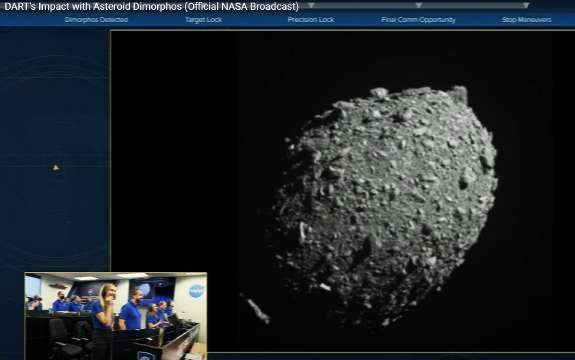

Since 26 September, analysis of data by NASA’s Double Asteroid Redirection Test, DART investigation team shows the spacecraft’s kinetic impact with its target asteroid, Dimorphos, successfully altered the asteroid’s orbit. This marks humanity’s first time purposely changing the motion of a celestial object and the first fullscale demonstration of asteroid deflection technology.
This mission shows that NASA is trying to be ready for whatever the universe throws at us. NASA has proven we are serious as a defender of the planet.
Prior to DART’s impact, it took Dimorphos 11 hours and 55 minutes to orbit its larger parent asteroid, Didymos. Since DART’s intentional collision with Dimorphos, astronomers have been using telescopes on Earth to measure how much that time has changed. Now, the investigation team has confirmed the spacecraft’s impact altered Dimorphos’ orbit around Didymos by 32 minutes, shortening the 11 hour and 55-minute orbit to 11 hours and 23 minutes. This measurement has a margin of uncertainty of approximately plus or minus 2 minutes.
Before its encounter, NASA had defined a minimum successful orbit period change of Dimorphos as change of 73 seconds or more. This early data show DART surpassed this minimum benchmark by more than 25 times. As new data come in each day, astronomers will be able to better assess whether, and how, a mission like DART could be used in the future to help protect Earth from a collision with an asteroid if we ever discover one headed our way.
NASA’s James Webb Space Telescope has captured new images of the Jupiter. This image comes from the observatory’s NearInfrared Camera, which has three specialized infrared filters that showcase details of the planet. Since infrared light is invisible to the human eye, the light has been mapped onto the visible spectrum.
In this standalone view of Jupiter, created from a composite of several images from Webb, auroras extend to high altitudes above both the northern and southern poles of Jupiter. A different filter, mapped to yellows and greens, shows hazes swirling around the northern and southern poles. A third filter, mapped to blues, showcases light that is reflected from a deeper main cloud.
The Great Red Spot, a famous storm so big it could swallow Earth, appears white in these views, as do other clouds, because they are reflecting a lot of sunlight.


India is not merely a growing IT market but a dominant global player with businesses fast adopting digital technologies, paving way for highly-personalised customer service. The market and businesses in the country are also driven by the adoption of next-generation technologies like Artificial Intelligence, Machine Learning, and big data analytics on the one hand and the traditional ERPs that are driving the manufacturing and the Make in India story.
This summarises the interaction at the India edition of the World CIO200 2022 Summit held online on 04 November 2022. The Summit was organised by the GEC Media Group and Global CIO Forum, along with the Global CIO Manufacturing Forum. This year’s Summit revolved around the theme of LeadX, leading through transformation; where technology is borderless, ambitions are fearless, and leadership is limitless.
Established in 2017, the World CIO200 Summit is a multi-country CIO felicitation ceremony that

recognises the achievements of digital leaders of today who have transformed the IT infrastructure of their organisations driving growth and change. The Summit has completed Africa, Europe, Qatar, UAE, Kuwait, Bahrain, Saudi Arabia, Oman, and Egypt editions. The Summit which is touring 40+ countries will culminate in the Grand Finale on 23–24 November 2022 in Thailand.
The virtual India event culminated with the presentation of the World CIO 200 Awards to recognise the achievements of CIOs and technology leaders driving IT infrastructure adoption in their organisations. The awards were presented in four categories of Legend, Master, Leader, and Next Generation CIO.
Welcoming the delegates Ronak Samanataray, Co-Founder and CEO, GEC Media Group highlighted the importance of India for the GEC Media group. “India is an important market not just for us but for the entire world. The way technology has evolved in India, the country is leading the digital
TheIndia
edition brought together technology decision makers and enterprise users sharing insights on how to drive digital adoption and innovation in the country.
transformation across the world,” he said.
He also highlighted that most global technology companies are laying high importance on the technology market in India. Sharing an example, he talked about the recent launch of 300,000 sq ft datacentre in Noida by the Hiranandani Groupowned Yotta Infrastructure.
“It is really great to see Indian technology companies like Yotta flying high and firing all cylinders to compete with the rest of the world,” he said adding that GEC Media Group has always believed in taking the game to the next level and the World CIO 200 is a step towards recognising the game changers.
Delivering the Summit’s Opening Keynote, Pratap Patjoshi, Global CIO Manufacturing Forum highlighted that the CIO Manufacturing Forum has come a long way from a small group of 10-12 members and evolving into a global organisation in a short span, to focus on concerns related to the use of digital technologies in the manufacturing sector.
“From a small group of 10-12 CIOs, the forum evolved to become a 100+ CIO organisation focusing on manufacturing units in Pune alone. A partnership with GEC Media this year has, however, helped us become a global organisation. We launched the Global CIO Manufacturing Forum or GCFM in Dubai earlier in 2022 and later in other cities. Overall, we are now an organisation with 500+ members in India and expect to add 2,000 more members from across the globe,” he said.
“The manufacturing processes across the sectors, irrespective of whether it is the manufacturing of a small component like a screw or products like a car or a truck, is the same. Barring things that may be unique to a product, all manufacturing companies follow the same process of raw material procurement, processing, and manufacturing a product is almost the same. This brings in synergy and GCFM has emerged as a platform for sharing experiences of technology deployments in the manufacturing sector.”
“This is also very important, particularly since the country and the Prime Minister have a lot of focus on Make in India and the organisation is looking forward to contributing to the momentum and taking forward the manufacturing journey in India,” he added.
Talking about the imperative of the VUCA or the world of volatility, uncertainty, complexity and ambiguity, Patjoshi stressed that the digital journey is important for any organisation. “Many organisations indicate the limitation of budget, manpower, process, and access to technology. However, it is important to start the digital journey by taking whatever smaller steps possible and growing it at one’s pace,” he said, adding that the forum can help such organisations in deciding
on the correct technologies and processes, and the right partners.
“The digital journey can help change volatility into vision. Uncertainty can be dealt with through innovation and a new way of doing things like the work-from-home that enabled the non-core staff to support running the manufacturing units with minimum shop-floor teams. The changing nature of customer needs and their demands is increasing complexity, which can be turned into an opportunity if the organisation has clarity on the needs,” he explained.
Patjoshi also touched upon the ambiguity factor stating that manufacturing companies will continue to face challenges of processes, changing market dynamics and scenarios. “Digital technologies can help convert the four factors of VUCA into vision, understanding, clarity and agility, the components that can drive an organisation’s growth,” he stated.
Improving consumer experiences using data With organisations adopting digital technologies in a big way, data has been projected as the new oil and data mining as the new way of driving growth. However, not all organisations are able to harness and utilise data in the same way. Talking about the issue Khushru M Mistry, CIO and Senior Vice President of Eureka Forbes India shared his insight into how organisations can democratise data to enhance their consumer experiences.
Sharing an example of the intricate pattern of a leaf, he explained that like the lines or the arteries on a leaf, businesses have a complex structure including services, direct sales, retail, B2B and e-commerce sites, and digital marketing. Besides, companies also have manufacturing, R&D, supply chain, human resources, finance, and admin functions to deal with. “All of these are interconnected with the customer at the centre,” he said, adding that the strength and loyalty of the customer, like the central artery of the leaf is critical for the success of a company.
So, what happens in the real-world organisation? “You may find yourself in a mess where a customer complains online or on social media about a product or its features and the post go viral. This drives the online reputation management or ORM team into action which tries to minimise brand damage. At the same time, however, the marketing team is bombarding the customers with the same product details,” Mistry elaborated.
“In order to ensure a satisfactory customer journey organisation, need to ensure that the customer data that it is collecting is democratised. In other words, an organisation must share relevant data with everyone involved in delivering simplified user journeys and improved customer experiences,” he said.
DATE: 04 NOVEMBER 2022
TYPE OF EVENT: ONLINE
100+ 90+
Number of online attendees Number of award winners
India is an important market and the way technology has evolved in the country, it is leading the digital transformation across the world
Ronak
Samanataray
Co-Founder and CEO, GEC Media Group
Digital technologies can help convert the four factors of VUCA into vision, understanding, clarity and agility, the components that can drive growth
Pratap Patjoshi Global CIO Manufacturing Forum
In order to ensure a satisfactory customer journey organisation, need to ensure that the customer data that it is collecting is democratised
Khushru M Mistry CIO and Senior Vice President of Eureka Forbes India




The success and failure of an ERP implementation depends on the organisation’s ability to select a partner with the right capabilities and experience
Allauddin F
Mohamad
Global Head of Information Technology, Camlin Fine Sciences
“An organisation may collect a lot of data, regardless of whether it is in a silo or centralised data lake or in a data warehouse, data democratisation is what really creates value because by shares the information with everybody involved within the organisation and even the customers. Its purpose is to enable everyone to access user data so they can make data-driven decisions to transform customer engagement.”
He, however, cautioned that data democratisation or sharing of data must be done with utmost care without compromising the data security and any leak of the PII or a customer’s Personal Identifiable Information. “Democratisation of data if done properly with adequate security measures provides a major opportunity to create a unified omnichannel customer journey by allowing organisations to improve customer experience based on data and not on assumptions or hunches.”
Mistry further highlighted that data democratisation empowers business teams to quickly enable behavioural segmentation and accordingly craft a response for the customer. “More importantly, it combines the efforts of ORM, marketing, sales, and services teams to work collaboratively to resolve the problem at hand,” he said.
Sharing insight into the steps that organisations need to take to reap benefits from the vast data, Mistry said that they first need to implement CDP or a common data platform that can integrate with the organisations’ CRM, data lake, ORM system, etc. This will help an organisation get a 360-degree view of the customer, their needs and the level of satisfaction and offer a highly-customised solution. He also advised that organisations can blend their AI and ML engines to segregate and identify customer cohorts to provide personalised recommendations.
“The end result is unlimited customer attributes that offer visibility per customer. It also helps speed up the brand’s time to market and create a lifetime value or CLTV for the customer, besides providing self-service orchestration at scale for the business and their customers,” he stressed, adding that all this will enable the wow experience for the customers.
Driving enterprise success through ERP
Integration of material movement with finance is critical for any organisation and a proper ERP solution provides the right tool for the stakeholders to be on top of the information. Talking about the rapid deployment of SAP, Allauddin F Mohamad, Global Head of Information Technology, Camlin Fine Sciences shared insight on the template-based approach to rolling out the solution.
“SAP has sector-specific ready-to-use roll-out templates that make implementation less risky as these have been customised by the domain experts by breaking the entire process into smaller modules. They also have different modules including in-house, cloud-based, and business-by-design,” he explained adding that the first step for an organisation is to set up a project committee, including an external resource to take the first step.
Talking about the key considerations while selecting an ERP partner, Mohamad pointed out that choosing the right partner for is as important as selecting the ERP solution itself. “The success and failure of your ERP implementation depends on the partner’s capabilities and experience. It is also important to trust and stick with the partner for the long term. Frequent change is a sure recipe for an ERP disaster,” he stressed.
He, however, pointed out that organisations must take adequate research before finalising the partner.
“It is important that the partner has adequate industry experience in the vertical that your company operates. One must certainly take into consideration the number of roll-outs in the vertical to understand past experience. CIOs must also take feedback from the partner’s customers on the service quality and offerings, their customisation and integration capabilities, involvement and participation, the support capabilities, and the relationship with the ERP vendor.”
Mohamad also stressed the need of setting up of right implementation team comprising functional experts from each operational team who would work with the implementation partner to define to process and the changes, an in-house project manager with strong cross-function business process and database knowledge, and an infrastructure manager with firewall and network architecture expertise.
“The other aspect is to conduct a gap analysis and define the scope of the project and break the rollout into phases. For example, Phase 1 can include the rollout of the standard modules so that there is no disruption in business transactions. Phase 2 can focus on third-party integration while Phase 3 can take care of enhancements for customisation. Organisations should consider any additional raptors for the last phase of the rollout,” he advised. He also pointed out that weekly target review meetings should be held to ensure the rollout meets the timeline.
The World CIO 200 Summit in India concluded with the felicitation of CIOs and Industry leaders who have accelerated digital and business transformation, creating a better future for their businesses and driving growth.
By Shubhendu Parth.Abhishek Agarwal, Akshay Kumar Sahani, ALLAUDDIN FAKIR MOHAMAD, Amzad Sheikh, Anand Sinha, Avneesh Vats, Balvinder Banga, Bhaskar Rao, BHUPENDRA KUAMR PANCHAL, CG Balaji, Chandran R, Deepak Kalambkar, Dipesh Thakar, Dr Chitranjan Kesari, Dr Rizwan Ahmed, Dr. Biswajit Mohapatra, Dr. Sunil Pandey, Dr.Amrut Urkude, G.D. Pandey, Ganesh Joshi, Girish Kulkarni, Hegde Subbarao, Indranil Chatterjee, Jitender Kumar Yadav, Jitendra Panchal, Kamal Matta, Kiran Neve, Krishna Dhumal, Krishnamurthy Rajesh, LAKSHMANA VADAGA, Milind Borse, MINU THOMAS, Nagraj Rao, Navin Nathani, NAVNATH BARAVKAR, Nayan Desai, Nikhil Kumar Nigam, Nirvan Biswas, Panish Javagal, Pareshkumar Goswami, Pradipta Patro, Pragnesh Mistry, Prakash Kumar, Prasad Katta, Pratap Patjoshi, Prerak shah, Prince Joseph, Rahul Biswas, Rajesh Kulkarni, Rajesh Thanua, Rajesh Tiwaskar, Ramkumar Mohan, Rasvinder Singh Nagpal, Sanjay Singh Galod, Satish Papnoi, Satyanarayana Kasturi, Selestin K Thomas, Subhakar Rudra, Sunil Kankal, Susil Kumar Meher, Unni Menon, Upkar Singh, Vijay Bhat, Vijay Varshney, VIKAS GUPTA, Vishwajeet Singh.
Amey Subhash Lakeshri, Gaurav Vyas, Neha Sivaprakasam, Pradip More, Rahul Raj.
Amit Jaokar, Amit Kumar, Ankit Goswami, Ashok Thalavaiswamy, Gajendra Patil, GAURAV VIJ, Harmit Singh Malhotra, INDRA BHUSHAN SINGH, Jagannath Sahoo, Mahendra Kandukuri, Mahen dra Soni, Prashant Kurhade, Ravinder Arora, Ravishankar Ramakrishnan, Sanjay Shirsat, Shashi Tripathy, Subroto Panda, Sumit Jain, Viral Davda, Viren Italiya, Yogendra Singh.

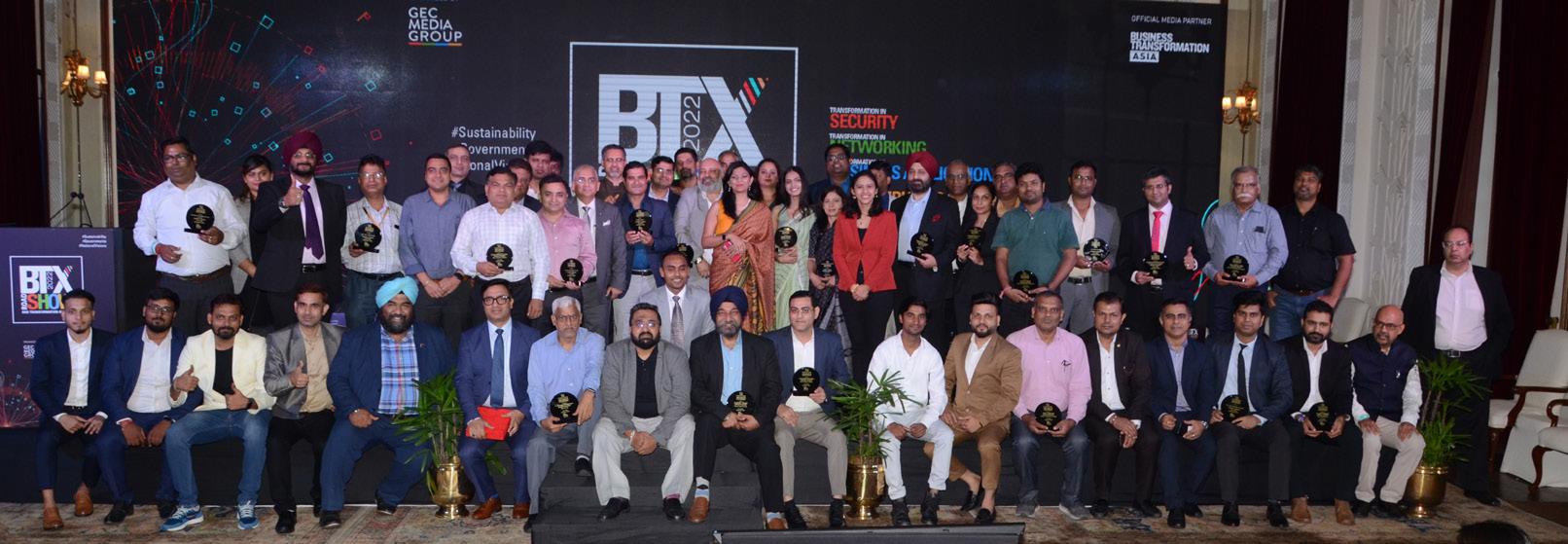






The GEC Media and Global CIO Forum recently organised the South-East Asia edition of the World CIO200 Summit 2022 in Singapore. This year’s summit revolved around the theme of LeadX, leading through transformation. The summit which saw an amalgamation of technology experts from the Philippines, Hong Kong, Malaysia, Vietnam, Indonesia, and Singapore, celebrated the bold spirit of technology leaders in exceeding challenges and barriers while bringing innovative solutions forward and driving organisational growth through technology interventions and digital transformations.
Established in 2017, the World CIO200 Summit is a multi-country CIO felicitation ceremony that recognises the achievements of digital leaders of today who have transformed the IT infrastructure of their organisations driving growth and change. Having completed Africa, Europe, Qatar, UAE, Kuwait, Bahrain, Saudi Arabia, Oman, and Egypt edition of the Summit, the South East Asian edition of the summit was hosted at the Sands Expo Convention
Centre, Marina Bay Sands in Singapore on 4 November 2022.
The summit which is touring 40+ countries will culminate in the Grand Finale on 23–24 November 2022 in Thailand.
The South East Asian edition of the World CIO200 Summit in Singapore was sponsored by 3i infotech, Kissflow, and Infinite Blue | CTO as the Gold partners; Lingaro as the Silver partner; Seeburger Business Integration as a Business Integration partner; and Infocomm Media Development Authority and RosettaNet as Supporting partners.
Welcoming the delegates to the in-person summit, Malavika Shanker, President, South East Asia, Global CIO Forum highlighted the importance of the event and how the forum has helped CIOs and digital technology experts connect and share information on trends, challenges, and deployments to help the community drive technology implementation and lead the transformation journey. “We believe in building human connections so together we
















succeed,” she said.
The Summit began with a session by Manoj Saxena, Chairman, RosettaNet Singapore GS1 Digital standards non-profit consortium. A dynamic senior IT executive with 20+ years of experience in consultancy and management across all areas of business operations, Saxena shared his insight on Partnership and Research. This was followed by a presentation by Dinesh Varadharajan, Chief Product Officer, Kissflow who highlighted the role of technology in driving business transformation.
An expert in building next-generation digital financial experience platforms, Arivuvel Ramu, CEO of Inypay shared his insight on his digital journey from being a CIO to becoming a CEO of a Fintech company. A former Group Chief Technology Officer at Tonik, the Philippines’ first purely digital neobank overseeing the digital banking IT organisation, Ramu built and launched the first pure-virtual digital bank in South East Asian edition region from the ground up across the multi-cloud platform.
The banking-as-a-service platform helps financial institutions re-evaluate the way money works to join the future digital ecosystem. The session was followed by a presentation from industry expert Rajeev Dutt, General Manager, Infinite Blue Company.
The summit also featured a unique Leadership Snippet: Rapid Fire session that saw Setiaji Setiaji, Chief of Digital Transformation Office, Ministry of Health, the Republic of Indonesia; Jim Sarka, CIO and VP of Business Technology for Asia Pacific, Johnson
& Johnson MedTech; and Khalid Nizami, Head of Information Technology and Digital Transformation, Ecolab share views on leadership qualities. The session was moderated by Vinay Awasthi, Worldwide Head of Print Supply Chain Ops, HP.
The other speakers included Tuan Anh Pham, Group CIO, Becamex IDC who shared a Solution Providers Roadmap to the CIO’s Mind. This was followed by a presentation by Edmund Situmorang, Chief Technology Officer of Asian Bulk Logistics. An industry veteran with over 15 years of senior management experience in strategy, information technology, and human capital development, Situmorang shared the story of a CIO’s transformation and the lessons learned from the journey. Next, Sin Yong Loh, Director, TradeTrust, Sectoral Transformation Group, Infocomm Media Development Authority shared information on the role of IMDA.
The penultimate session was the next round of rapid-fire Leadership Snippet with experts including Rajesh Nandakumar, Head of Technology, Westpac Banking Corporation; Manju Jalali, Global Head of IT, International Baccalaureate; and Sham Arora, Global Head, Enterprise Technology, Standard Chartered Bank. The session was moderated by Shanker.
The World CIO 200 Summit in Singapore concluded with the felicitation of CIOs and Industry leaders who have accelerated digital and business transformation, creating a better future for their businesses and driving growth. Delivering the Vote of Thanks, GEC Media Group’s Global Head for Content and Strategic Alliances Anushree Dixit talked about the forum’s history, reach, and the South East Asian edition network. She thanked the delegates and speakers for joining the event and making it a big success.
By Shubhendu Parth.Alvin Ong, Arul Jesuvivek Chinnappan, Biren Kundalia, Clara Lee, Javen Lim, Jim Sarka, Khalid Nizami, Krishna Ayagari, Madhivanan Periannan, Manju Jalali, Manoj Saxena, Mayda Lim, Miao Song, Osman Ershad Faiz, Rajesh Nandakumar, Ravi Gerald-Vishwanath, Santosh Nair, Sham Arora, Shashank Singh, Shui-Min Tan, Sudhanshu Duggal, Teck Guan Yeo, Thirumal Raj C.
Established in 2017, the World CIO200 Summit is a multi-country CIO felicitation ceremony that recognises the achievements of digital leaders.Ichwan Peryana, Izzat Aziz.
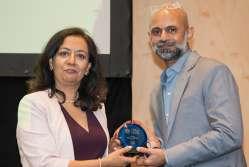








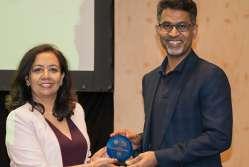






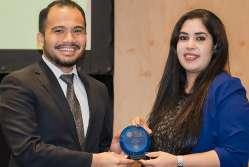
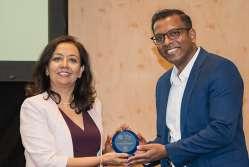

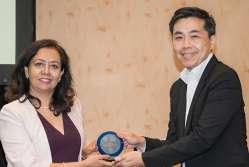
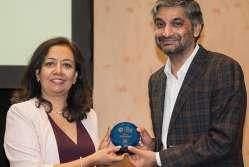
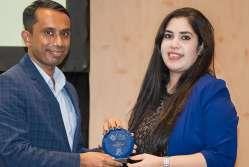












Inspiring a tectonic shift in India’s digital transformation story with world-class datacentre parks, Yotta, Mumbai-based Hiranandani Group’s data centre arm, launched North India’s mission to new heights with Yotta D1 datacentre – North India’s first hyperscale adatacentre at Yotta’ Greater Noida Data Centre Campus on 31 October 2022. Uttar Pradesh Chief Minister Yogi Adityanath inaugurated Yotta D1 in the presence of leading IT leader and government officials.
During the event, Yotta revealed ideas to spend ₹39,000 crore to create data centre and IT service infrastructure in Uttar Pradesh over the coming seven years.
Hyperscale data centres are big units that keep tens of thousands of servers and handle critical network functions and compute for
businesses. Amazon Web Services, Google Cloud and Microsoft’s Azure top the business in the country and globally.
Speaking at the event, Sunil Gupta, Co-Founder and CEO, Yotta Infrastructure said that each data centre will cost ₹6,500 crore. The dedicated venture capital is for six data centres. We have even now started work for D2 and DE which shall be ready in 12-15 months.
Yotta Infrastructure is a division of Mumbai-based Hiranandani Group which is developing three data centres in Uttar Pradesh’s Greater Noida. Work on the 20-acre data centre started in January 2021 after the administration had designated the land to the firm in 2020.
professional services firms and Fortune 500 companies.
The acquisition was completed at a fixed consideration of $23.428 Million subject to certain adjustments as per definitive agreements. In addition, the definitive agreements provide for payment of annual performance based earnouts over the next four years.

NIIT, a global talent development corporation and leading provider of managed training services, announced today that it has acquired 100% membership interest in St Charles Consulting Group through its wholly owned subsidiary, NIIT USA, Inc. Headquartered in St Charles, Illinois. StC is a leading provider of consulting, design, and implementation solutions for strategic learning programs to
Founded in 2002, by two former Arthur Andersen Partners, St. Charles Consulting Group has a network of over 500 premier management consultants in the fields of learning, organisation development, knowledge services, and workforce planning. The company offers solutions in four key areas – strategic consulting, custom learning experiences, learning curation, and managed services.
With their genesis as leading Arthur Andersen learning professionals at Andersen’s Worldwide Centre for Training and Development, the company’s founders and key team members have served over 12 out of the top 15 global professional services firms.
The acquisition helps NIIT add significant presence in the professional services and management consulting sectors while strengthening NIIT’s rapidly growing learning consulting practice. The transaction is in line with NIIT’s stated goal of accelerating growth through investments that add new capabilities to bring more value to its customers and strengthen presence in attractive customer segments.

a sleek wearable urine bag, is currently selling in 7 countries, with 6 newly signed territories.
As part of the agreement, HubForward will also support ProvenMed with research and development capabilities in South Korea to accelerate the testing and commissioning of its upcoming MedTech products namely the Comffi, the first hybrid stress incontinence solution for women, the ActivFront for supporting front-liners and the ActivGo Smart the first AIpowered wearable for bladder health monitoring. Furthermore, in line with the UAE’s desire to grow domestic manufacturing, ProvenMed is also looking to develop near-future local production capacity bringing together HubForward’s qualified manufacturing partners from South Korea with local UAE qualified partners.
Supported by the Mohammed Bin Rashid Innovation Fund, MedTech innovation start-up ProvenMed has signed an agreement with South Korean advanced manufacturing platform HubForward to produce its flagship medical kits.
The agreement is a result of increased demand for ProvenMed’s flagship product for people with urinary incontinence – the ActivGo– from distributors all over the world. The ActivGo kit, which includes wearable catheters, a unique integrated cleaning system, a portable bidet, and
The ActivGo Smart is the world’s first AIpowered wearable for non-invasive bladder monitoring that is designed to detect and prevent kidney failure, strokes and dehydration conditions in an advanced stage, while the Comffi is designed for women, especially hospital in-patients, to manage the stress of incontinence comfortably and conveniently with total comfort and no fear of infections.
Ministry of Trade and Industry, and Sun Haiyan, Ambassador Extraordinary, and Plenipotentiary of the People’s Republic of China to the Republic of Singapore.
The Lab covers more than 400 square meters in CHINT’s APAC regional headquarters in Aperia Tower 1 in Kallang and showcases solutions in fields ranging from new energy and power distribution to data centres and industry.
operating for more than 20 years, covering nearly 30 countries, and currently has more than 100 employees, among which foreign employees account for more than 75%.
CHINT, a smart energy solution provider from China, unveiled a new innovation lab in September, 2022, aiming to better support APAC regional industry partners. The opening ceremony of the Innovation Lab was attended by Low Yen Ling, the Singaporean Minister of State, Ministry of Culture, Community and Youth and
With the global headquarters in Shanghai, CHINT Global operates in more than 140 countries and regions around the world. Having been an active player in the Singaporean market for one decade, CHINT Global is a qualified power distribution cabinet supplier recognised by the Singapore Housing and Development Board.
In Asia Pacific, CHINT has been
CHINT Global also acquired Sunlight Electrical, a longestablished local manufacturer of electrical distribution products, which has factories in Singapore, Malaysia and Vietnam. Last year, CHINT relocated its APAC regional headquarters from Hong Kong to Singapore.
Lily Zhang, CEO of CHINT Electrics, described the establishment of the APAC regional headquarters in Singapore as a natural move, for as early as in 2020 when CHINT laid down its five-year plan, Singapore was already the planned APAC regional headquarters.

Softline, the global IT and digital transformation solutions and services provider, announced the signing of an agreement to acquire Indian digital infrastructure and cybersecurity solutions and services company Value Point Systems.

The transaction further strengthens Softline’s business operations and capabilities in cybersecurity, digital infrastructure, managed solutions and services in India. Because of this acquisition, which embodies Softline’s strategy and vision for India of investing in India for India, Value Point System’s 2,000 local customers will now have access to Softline’s full portfolio of solutions and services.
With over 30 years’ experience, Value Point Systems is growing thanks to over 1,200 employees distributed in seven offices across the country. The company has
become a leading end-to-end next generation digital infrastructure and cybersecurity solutions provider in India with technology partners such as AWS, Cisco, CrowdStrike, Hewlett Packard Enterprise, HP, Microsoft, VMWare, Zscaler, among others.
Throughout the years, Value Point Systems has built a portfolio which today includes six end-to-end solutions and services: cybersecurity, data centre modernisation, network transformation, cloud transformation, digital workplace, and IT managed services. These solutions will complement Softline’s own portfolio.
Specifically, once the acquisition of Value Point Systems is completed, Softline will strengthen its global cybersecurity proposition with the capabilities of VPS’ Security Operation Centre, one of the industry’s leading in India. Value Point Systems’ cybersecurity integration capabilities, and sophisticated cybersecurity consultancy offering, will augment Softline’s existing services.

Tata Power Trading and 75F Smart Innovations India, signed an agreement to promote building automation and energy-efficiency solutions in the commercial building space. This is across industry verticals like IT, ITeS, BFSI Hospitality, Healthcare, Education, Government and Retail. The association will greatly help businesses optimise their energy consumption and usage.
With this collaboration, TPTCL and 75F shall jointly offer solutions in the space of Heating, Ventilation, and Air Conditioning optimisation and smart building automation powered by cutting edge technologies like IoT, cloud and artificial intelligence and machine learning. These solutions shall help commercial buildings with centrally air-conditioned spaces attain assured savings on their HVAC energy consumption, which typically constitutes 50% or more of total building energy consumption, along with intelligent automation, analytics, and actionable insights regarding their facility and portfolio data.
Tata Power Trading Company holds a Category-I Trading License and is engaged in the business of
energy sourcing, trading, and energy efficiency services. TPTCL is also a Grade-1 ESCO certified by the Bureau of Energy Efficiency.
75F Smart Innovations, provides a full-stack, IoTbased Building Management System that includes sensors, zone controllers, master controllers, integrated Building Intelligence Solution and sophisticated portfolio analytics. 75F’s vertically integrated hardware and software work out of the box to improve comfort and indoor air quality while significantly reducing building energy consumption.
The Dubai Financial Services Authority signed a Memorandum of Understanding with The Securities and Exchange Commission of Thailand, to enable open dialogue about technology enabled financial innovation in financial services, including FinTech and Regulatory Technology. The MoU was by Ian Johnston, Chief Executive of the DFSA, and Ruevadee Suwanmonkol, Secretary-General of the SEC. The agreement provides a framework for further co-operation between the two authorities on regulation, policy and trends in financial services and markets.


technological capabilities of Tech Mahindra and the domain expertise of SoftTech to provide customised solutions for end-to-end digital transformation of business in the construction and infrastructure industry.
to enhance Human Centric Experience, Tech Mahindra focuses on investing in emerging technologies and solutions that enable digital transformation and meet the evolving needs of the customer.
Tech Mahindra announced a strategic partnership with SoftTech, a provider of advanced digital solutions for the construction and civil infrastructure industry, to digitally transform the global construction and infrastructure industry. The partnership will combine the
The partnership will enable customers across the government and corporate sectors to streamline business operations, boost efficiency, and improve customer experience by leveraging leadingedge technologies like Artificial Intelligence, Machine Learning, Building Information Modelling, Digital Twins, Augmented Reality, Virtual Reality, Mixed Reality, Construction Wearables, Robotics, Metaverse, and Internet of Things.
Tech Mahindra believes in DigitALL philosophy for comprehensive Business Transformation. This partnership is in line with Tech Mahindra’s focus on digital growth, under the NXT.NOW framework, which aims
The partnership will further strengthen Tech Mahindra’s market position in the construction industry and empower organisations with seamless implementation and integration of digital solutions across departments, functions, and the workforce at the desk and on the field.
Tech Mahindra and SoftTech will also work towards crossskilling their resources through training programs for knowledge sharing on various tool implementations, scaling applications, thereby creating a skilled talent pool for innovative and scalable solutions.
JAGDISH MITRA Chief Strategy Officer and Head of Growth, Tech Mahindra.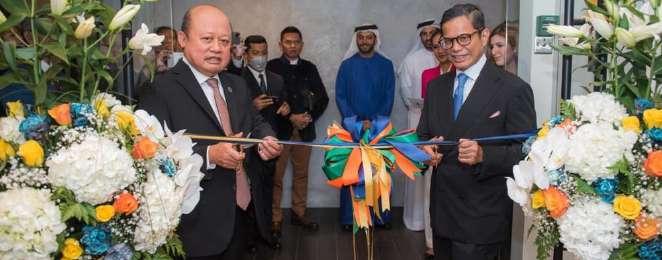
Indonesian State-Owned Enterprise, PT Pupuk Indonesia, is expanding opportunities for trade cooperation in ammonia, urea, NPK, and other products by opening a representative office in United Arab Emirates. Through this expansion, Pupuk Indonesia hopes to further expand its trading businesses and gain broader access to raw materials and other industrial developments.
In his remarks, the First Deputy Minister of State-Owned Enterprise of the Republic Indonesia, Pahala Nugraha Mansury, stated that Pupuk Indonesia as the largest fertilizer producer in Asia plays an important role in the world fertilizer trade. In 2022, Pupuk Indonesia is predicted to achieve a revenue value of $6 billion or a two-fold increase in the last five years.
At the same event, Pupuk Indonesia also signed an MoU with Fertiglobe, the largest producer of nitrogen fertilizers in the Middle East and North

CADD Centre, India’s largest network of Design Training Institutes, has launched First Job Pakka, a training-cum-placement initiative to provide futureready courses to students. The courses lead to gainful employment in fast growing and emerging industries. In the first year, CADD Centre is targeting to place 5,000 engineering students.
To popularise this, CADD Centre has commenced a First Job Pakka campaign across all important channels in Regular a social media. The TV commercial caddcentre.com, firstjobpakka encourages students to train in advanced courses in product design and development, analysis, civil and architecture, and Information Technology domains and be ready for upcoming industry jobs. The First Job Pakka Campaign has a series of 4 light hearted commercials, each to be released sequentially over 4 months. A dozen more promotional videos calling students to walk-in and get
Africa and largest seaborne exporter of ammonia and urea globally.
Fertiglobe is a strategic partnership between OCI NV and the Abu Dhabi National Oil Company and is listed on the Abu Dhabi Stock Exchange. This MoU shall allow Pupuk Indonesia to potentially utilise Fertiglobe’s global distribution business to facilitate the placement of its ammonia and urea product
The President Director of Pupuk Indonesia, Bakir Pasaman, stated that this representative office will carry out several roles, such as ensuring seamless and reliable communication with current partners, suppliers, and future clients, and serving as a trading arm to expand the company’s trading business to the international market. The Dubai office will further ease the company’s access to the purchase of raw materials, especially for NPK fertilizer, and enable future collaborations with technology and manufacturing companies located in the UAE, and which will support Pupuk Indonesia’s trading business moving forward.
their first jobs, after about 80 hours of training in select, job-oriented courses are also ready for release. Considering the rapid induction of AI, IoT and Big Data in all engineering realms, CADD Centre’s courses, launched under the First Job Pakka initiative, will feature training in programming and algorithm development, in addition to the CAD, CAE, and Project Management skills in all engineering streams. To enhance employability, CADD Centre courses lay emphasis on soft skills –technical communication, emotional intelligence and interpersonal skills to perform well at work.

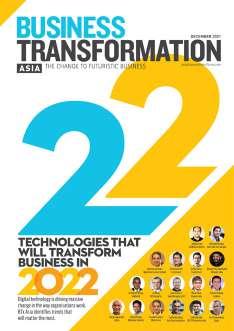






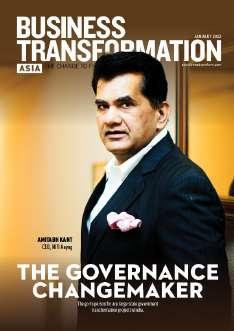





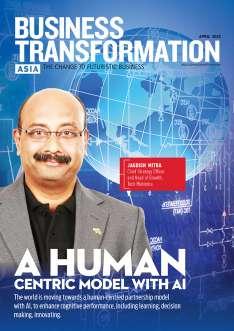



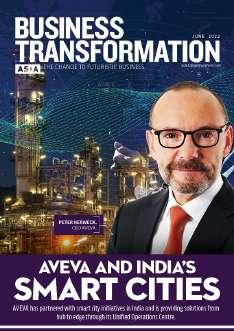












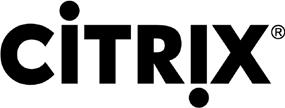



The beauty of crypto is that it is unbiased and permissionless

To support trading for majority of tokens and NFTs, OKX is expanding the team of engineers who focus on interoperability of different blockchains.
OKX is a global provider of products and services for investing in and trading digital assets. OKX is the second largest crypto exchange by volume, offering retail and institutional customers spot, futures, margin, options, and perpetual swaps trading. Additionally, OKX’s product suite includes Earn, a tool for growing digital assets through staking and DeFi; a Web3 Wallet for self-custodying assets; an NFT marketplace; and more.
The core purpose of blockchain-based transactions and other crypto innovations is to address problems with the classical financial system, such as high costs, entry barriers, and data vulnerability. Blockchain is not necessarily a speed solution, but it is one of the most efficient and secure technologies for global transactions and easy accessibility for anyone on the planet.
“The beauty of crypto is that it is unbiased and permissionless,” says Lennix Lai, Director of Financial Markets, OKX.
In terms of speed, scalability solutions are being introduced as an additional technology layer to optimise blockchain-based transactions, such as the Lightning Network for Bitcoin and Polygon for Ethereum. Both Lightning and Polygon are Layer 2 technologies that are used to increase speed and volume of transactions without compromising blockchain’s core purpose.
In order to provide a one-stop web3 experience and support trading for a majority of tokens and NFTs, OKX has built and continues to expand our team of world-class blockchain engineers. The team focuses on developing the most comprehensive suite of digital asset instruments, and to create a seamless user experience. “This requires us to focus heavily

My vision for the metaverse is that it should be a digital representation of the real world, but more open, borderless and free. With the evolution of technologies like AR, VR, AI and web3, we are going to be establishing another economic system that operates in parallel with the real-world economy. Regardless of all this, an open economy still needs a globalised asset transfer system.
Blockchain is the best technology we have for making asset transfers within the metaverse economically feasible. Exchanges are going to be an important part of this. They are going to serve as the gateway between the metaverse and the real-world economy.

on interoperability of different blockchains,” says Lai.
“We also need to double down on our risk engine, margining system, and liquidation algorithms, all of which our engineers built from scratch,” he adds. Crypto’s degree of innovation means there is no existing playbook to reference.
OKX is striving to eliminate financial barriers, helping to evolve the global economy, and change the world for the better. OKX is at the forefront of innovation and creating a user experience that makes web3 trading and investing, available to everyone. Crypto regulation is complex and varies significantly by jurisdiction. OKX is committed to cooperating with regulators and protecting its users in a range of ways, one of which is by providing educational resources on the products and services we offer.
“Crypto, and bitcoin specifically, is the native money of the internet,” points out Lai. “We can expect to see crypto increasingly intertwined

in the metaverse as a form of payment within gaming, content creation, AR-VR experiences, and other digitally native ways,” he adds.
Similarly, NFTs will continue to emerge as proof of ownership in the digital world and within decentralised applications, dApps, which are an important part of the metaverse. OKX’s dApp discovery feature is a great place to explore different use cases for both crypto and NFTs in the metaverse.
The UAE has a high concentration of crypto natives and sophisticated traders. In addition, the UAE regulatory framework is sound, with the framework having sufficient flexibility to allow players to evolve along with the industry.
OKX believes crypto regulation should be focused on user protection and anti-money laundering, yet the ability to engage in a constructive dialogue is also crucial.
As one of the most powerful exchanges with very robust trading tools, OKX wants to galvanise this constituency and support responsible trading behaviours.
Scalability solutions are being introduced as an additional technology layer to optimise blockchain-based transactions.
Lightning and Polygon are Layer 2 technologies that are used to increase speed and volume of transactions.
The core purpose of blockchain-based transactions is to address problems with the classical financial system.
Blockchain is not a speed solution, but it is one of the most secure technologies for global transactions.
The team focuses on developing the most comprehensive suite of digital asset instruments
This requires focus on interoperability of different blockchains.
Crypto’s degree of innovation means there is no existing playbook to reference.
OKX is at the forefront and creating a user experience that makes web3 trading and investing, available to everyone.
Crypto regulation is complex and varies significantly by jurisdiction.
OKX is committed to cooperating with regulators and protecting its users.
NFTs will continue to emerge as proof of ownership in the digital world and within decentralised applications.
• UAE has a high concentration of crypto natives and sophisticated traders.
• UAE regulatory framework is sound with the framework having sufficient flexibility.
• Crypto regulation should be focused on user protection and anti-money laundering.

• Metaverse should be a digital representation of the real world but more open.
• An open economy still needs a globalised asset transfer system.
• Blockchain is the best technology we have for making asset transfers within the metaverse economically feasible.
• Exchanges are going to serve as the gateway between metaverse and realworld economy.


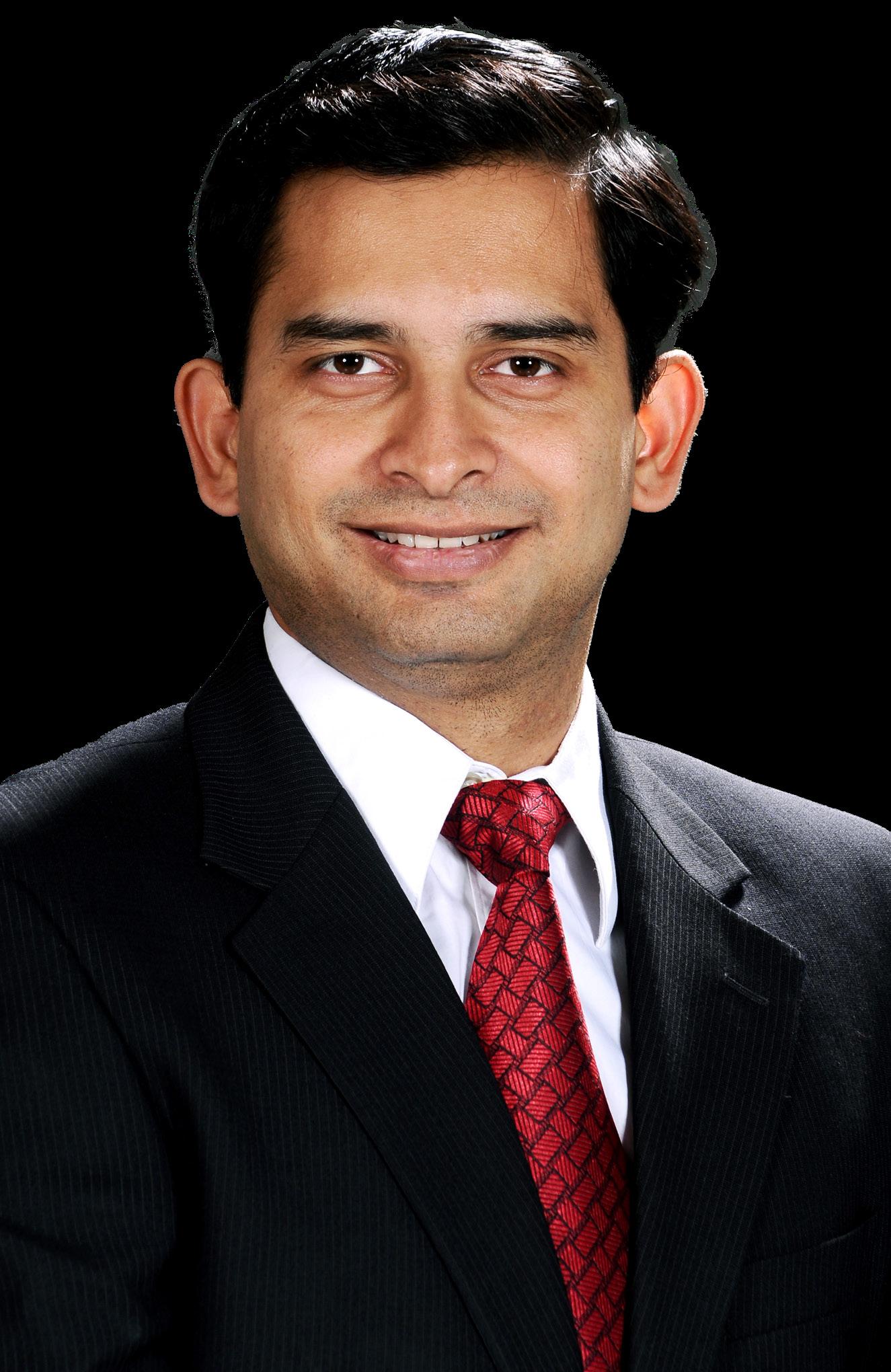
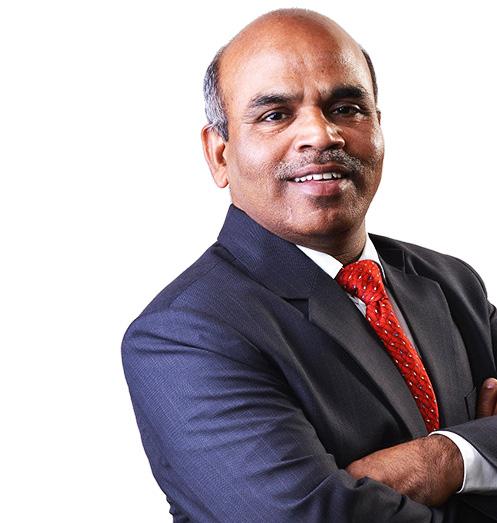
In 2008, when the credit and financial crisis was impacting businesses globally and across sectors, logistic players were dealing with the problem of surplus resources. The sluggish market meant people and infrastructure were not getting utilised optimally, a concern that companies like DHL-owned Blue Dart were trying to address.
During the same time, TV-based retail shopping had started picking up in India. This is where a few senior-level professionals from the company’s northern region picked up an opportunity. Soon, they approached a few TV-based home shopping businesses, which opened the door for a pilot B2C delivery service.
The new business meant that the order generated through TV shopper would be assigned to the company for delivery to the consumers. Slowly, the B2C business started growing and by 2012, the company was also handling consumer deliveries for the likes of Naaptol and Snapdeal, contributing substantially to the northern region revenues.
However, company and industry veterans K Satyanarayana, Manju Dhawan, Sanjeev Saxena, and TA Krishnan were feeling constrained since Blue Dart was primarily a B2B logistics company that required a different mindset and timeline approach than what was needed for B2C services.
Also, the delivery centres were aligned to business districts and the shipments were majorly air-based, which was limiting the service delivery beyond the metros and Tier 1 cities. This is when the four of them decided to set up Ecom Express, a B2C logistics solutions provider for the e-commerce players in India.
UNIQUE BUSINESS MODEL Incorporated in August 2012, Ecom Express began its operations in January 2013 with a footprint of 35 cities and 42 delivery centres in northern India, and clients like Myntra and Jabong.
“We are unique in the sense that we created the delivery mechanism for e-commerce companies from its early days in the country,” says Satyanarayana, Director and one of the four co-founders of the company. He further explains that while Ecom Express
is a B2B company, it operates in a B2C business model and offers end-to-end logistics services to the e-commerce industry, including lastmile delivery to consumers in the remotest part of the country.
Its end-to-end logistics services include first-mile pickup, processing, and network optimisation as well. The company also offers facilities such as fulfilment services and digital services. Under fulfilment services, Ecom Express offers warehousing and order management services, while the digital services include e-KYC-Aadhar-based biometric verification and industry-specific cash, cheque, and document collection and Contact Point Verification or CPV services.
During the last nine years of operation, the company has established its presence in over 2,650+ towns across 27,000+ PIN codes in 25 states of India. Of these, around 8,000 PIN codes are exclusive to Ecom Express, making it the only private logistics company in the country with the ability to commit delivery in these areas.
It is also the first private logistics company in the country to envision a full-state coverage strategy which has enabled it to reach every doorstep in every city, town and village in a state. The deep reach strategy has also ensured that it can cater to more than 95% of households in India.
No wonder then the company has an impressive client list of over 2,000 small and large e-commerce companies, including market leaders such as Amazon, Flipkart, Clovia, Myntra, Paytm, and Nykaa. It also provides services to companies from the banking, insurance, and financial sectors.
Within a year of launching operations, Ecom Express rolled out its services in western and southern regions as well as the erstwhile state of Jammu and Kashmir and expanded its operations to 108 delivery centres. These were, however, still the major cities like Bangalore, Chennai, Delhi-NCR, Hyderabad, Mumbai, Pune, and Surat while the core team was clear that the future of their B2C e-commerce logistics company lay beyond the Tier 1 cities.
“We wanted to create the capability to reach every doorstep in every city, town and village in a state and decided to use the PIN code approach of the Indian postal service,” Satyanarayana explains. With consultancy from a retired Indian
l Adopting a deep-reach strategy to create a B2C fulfilment infrastructure based on the postal department’s PIN codes to increase coverage to nearly 95% of households across 25 states in India.
l Creating a seamless cash-on-delivery solution to offer secure financial transactions and the ability to remit the working capital to customers across the cities.
l Introducing Try and Buy service that enabled the e-commerce companies to offer product trials at the customer’s premises before purchase.
l Launching Switch Delivery services to enable end-users to return products under certain conditions and as per their respective exchange policies.
l Scaling operations to offer Valuable Cargo Handling service with security and surveillance for transportation of valuable items like gold, precious art pieces, gems and jewellery.

Ecom Express has been using cutting-edge technology to automate first-mile pickup, processing, vehicle tracking, and last-mile delivery
Chief Product and Technology Officer, Ecom Express.
Post official, Ecom Express soon started to create a PIN code-based delivery network as a pilot in Haryana.
While the company was already using long-haul delivery for major cities, it decided to use the Milk Run delivery approach for complete state coverage. The approach involved planning shorter
circular routes to complete multiple PIN-code-based deliveries for smaller towns and villages.
“The PIN-code-based expansion led to substantial growth in demands for partner e-commerce companies. This gave us the confidence to adopt a similar model to create a pan-India network
and reach,” he points out, adding that the model proved to be the company’s most transformative initiative.
As the volume started to increase from smaller towns and cities, the e-commerce companies were faced with another problem, that of a surge in demand for cashon-deliver or COD which enabled the customers to pay only after receiving the package. Many of the e-commerce players were wary of the COD route as they were concerned about security during cash transactions and further remittance.

Ecom Express created a stringent collection process, as well as tied up with financial institutions and payment gateways to offer COD service, taking over the
entire risk of its e-commerce clients. “We have been able to seamlessly solve the COD problem and created an ability to remit the working capital to customers across the cities,” Satyanarayana informs.
“Our ability to deliver across PIN codes and COD services had a big impact on the industry. It enabled e-commerce companies to meet demands from Tier 2 and 3 cities and even villages that were not even on their radar,” he highlights pointing out that at present nearly 60% of overall e-commerce shipment volumes flow into the hinterland, of which 70-75% are COD transactions. “Today the India market story is all about Bharat, beyond the metro and Tier 1 cities. We achieved it almost seven years back,” he says with pride.
Over the years, the company
l Automation solution for first-mile pickup, processing, mid-mile network optimisation, vehicle tracking and e-lock systems, and last-mile delivery.
l Use of data analytics to foster routing optimisation through advanced algorithms, operational volume prediction and optimised resource planning.
l Last-mile routing and shipment allocation algorithms help improve overall productivity with the AI allocating route-specific shipments.
l AI-driven location intelligence platform identifies and tags each address with a score that captures the likelihood of successful delivery, as well as route guidance and rider allocations.
l Load orchestration engine to deal with load variance and maintain a stable lastmile network for consistent performance.
also added a wide range of services to complement and enhance its logistics offerings and enable e-commerce companies to improve their customer experience. Under its Try and Buy service, Ecom Express enables companies to offer a comfortable and customer-friendly exchange management service. This has helped e-commerce companies offer product trials and evaluations by end-consumers.
It also offers Switch Delivery services to enable end-users to exchange products under certain conditions, as well as Reverse Logistics for pick-up and delivery of products back to partner establishments so that the end customers receive their refunds promptly. It also has a Valuable Cargo Handling service that promises the highest level of security and surveillance-enabled transportation of valuable items like gold, precious art pieces, gems and jewellery. However, none of these could have been possible without the use of technology. “Our order fulfilment service uses cutting-edge technology for controlled movements of orders and point-topoint validation, creating a transparent process,” says Amit Choudhary, Chief Product and Technology Officer
of the company.
“Besides focusing on reach, Ecom Express sees systematic digitisation throughout its business as a lever to achieve significant growth. We have the agility to adopt advanced automation and constantly add significant value to the unique needs of customers. We have already established numerous highly efficient automation and data science capabilities over the last few years,” he adds. A vast majority of the company’s efforts go into technology exploitation to optimise the core business, enhance customer experience, and achieve greater operational efficiency.
“Using features like efficient route optimisation, real-time electronic proof of delivery, cash-on-delivery collection, and real-time order tracking facilities, Ecom Express provides a seamless experience to both the end customers and the consignees,” stresses Choudhary.

Ecom Express has established its presence in the industry offering a differentiated business model built on delivery service capability, scalability, customisation, and sustainability. “We have been using cutting-edge technology and automation solutions
l In revenue terms, the company registered Rs 1,018.45 crore revenue in 2018-19, up from Rs 578.75 crore in 2017-18 and Rs 493 crore in 2016-17. In 2020-21, the company clocked revenues of Rs 1,629 crore and a profit of 43.4 crore.
l Recently, in October 2022, the company raised $29 Million from Partners Group, followed by a $5.8 Million investment by Warburg Pincus and $3.7 Million by the UKbased British International Investment Plc, formerly CDC Group.
l It had initially raised a Series A investment of $17 Million from Peepul Capital in 2014, a Series B investment of $133 Million from Warburg Pincus in 2015, and a Series C investment of $36 Million from CDC Group.
Our ability to deliver across 27,000+ PIN codes and COD services is enabling e-commerce companies to meet demands from smaller towns and villages
K SATYANARAYANA
Director and Co-founder, Ecom Express.
to enable first-mile pickup, processing, mid-mile network optimisation, vehicle tracking and e-lock systems, and lastmile delivery,” he explains.
He further asserts that the company has comprehensively modernised its IT systems, integrating new technologies, offering its employees training to enable them to use these technologies and, thus, steadily improving its services, processes and standards.
The company is also leveraging technology including AI and big data analytics for last-mile fulfilment, process automation and network optimisation. “We have been investing in technologies that help meet the network speed requirements and enable seamless user experience. We are making our applications smarter by bringing more automation into our process and digitally transforming them. Embedding models into our technology stack and investing in hardware have given us a huge advantage in processing shipments with speed.”
The company has also invested heavily in data science to drive better automation and smarter decision-making. “When processing many shipments, one needs to know that the facilities are positioned right, they are
closer to the demand centre, and have high throughput,” he points out. “As we continue to push more volumes through our large network to drive growth in Tier 3 and 4 cities, we use data science to position some of our facilities in the last mile optimally.” Choudhary elaborates.
He points out that since the delivery centres are usually designed to handle fixed capacity, the technology team is creating a load orchestration engine to eliminate any gap to deal with the load variance that occurs at times. This is expected to help Ecom Express maintain a stable last-mile network and ensure consistent performance.
“In case there is a delay in shipment due to orchestration, the FIFO or First in-First out and customer priority logic will be applied, and the consignee and shipper will automatically be notified of the re-promise,” he explains.
To handle scale, the company has worked extensively on the automation of hubs and sort centre processes. It has improved the sorting system to process around six million shipments per day. Besides, the system uses several supply chain algorithms for real-time monitoring and exact SLAs to assist established integrated processes from the time of pickup through delivery.

Pick-up from sellers or warehouses and delivery of products to end customers.
Specifically designed service for transporting huge and bulky products.
Pick-up of returned products and delivery back to sellers within 24-72 hours to ensure a timely refund.
QC Enabled Reverse Logistics
Door Step Quality Check enabled Reverse Pickup to curb returnrelated leakages and simplify online shopping returns.
Ecom Digital Services
e-KYC-Aadhar-based biometric verification plus cash, cheque, and document collection and Contact Point Verification.
Tailor-made warehousing and order management services.
Product exchange management service to enable product trials and evaluations by end-consumers.
Exchange of products by customers, including return services.
High security and surveillanceenabled transportation of valuable products like gold, art pieces, gems, and jewellery.
Ecom Express has also developed last-mile routing and shipment allocation algorithms to help improve overall productivity. “Instead of the human, you’re letting the AI decide how many shipments to allocate in a particular route. This improves the overall productivity in our last mile since the last mile is the most complex stage in the entire e-commerce fulfilment journey and often amounts to the highest costs of an order journey to the customer,” Choudhary points out. The
initiatives have resulted in a 20-25% reduction in customer response time.
He also informs that to help improve last-mile delivery, handle issues of address anomalies, and ensure the accuracy of order delivery, the company uses a sophisticated AI-driven location intelligence platform that identifies and tags each address with a score that captures the likelihood of successful delivery. It has also integrated AI-based solutions to provide route guidance and rider allocation.
Overall, Ecom Express has over 3,000 delivery centres across the country and 45,000 Delivery Associates. This makes mapping each route and tracking each package a humongous task. To deal with the issue, the company ensures that every shipment journey through each of the locations is digitalised in realtime. This helps improve last-mile operational efficiency by catering to changing customer demand and external circumstances to improve performance and consistency.
“Real-time tracking and accountability of what has to

Parcel
be done on a particular day and how much has been accomplished are available and visible across the network. We have also invested in unique service features, such as validation of delivery attempts via OTP, which gives confidence to our customers about the genuineness of the number of delivery attempts made,” Choudhary says.

The company takes into consideration dynamic requirements related to the inbound and outbound shipment, cut-off time,
demand fluctuation, and random behaviours. The decision-making team can examine trade-offs between reliability by adjusting the workforce, changing cutoff time, or redesigning the service network.
“We operate a pan-India asset-light, end-to-end express logistics network. The flexibility of our network design is also a key differentiator for us,” concludes Choudhary.
Shubhendu Parth is a contributor to Business Transformation Asia.
First-mile
Last-mile
Parcel
As the banks of data grow exponentially, cloud, access speed, artificial intelligence are rapidly converging.

Pure Storage has been working with Meta since 2017 but building its Research SuperCluster required meeting parameters of highest scale and efficiency.
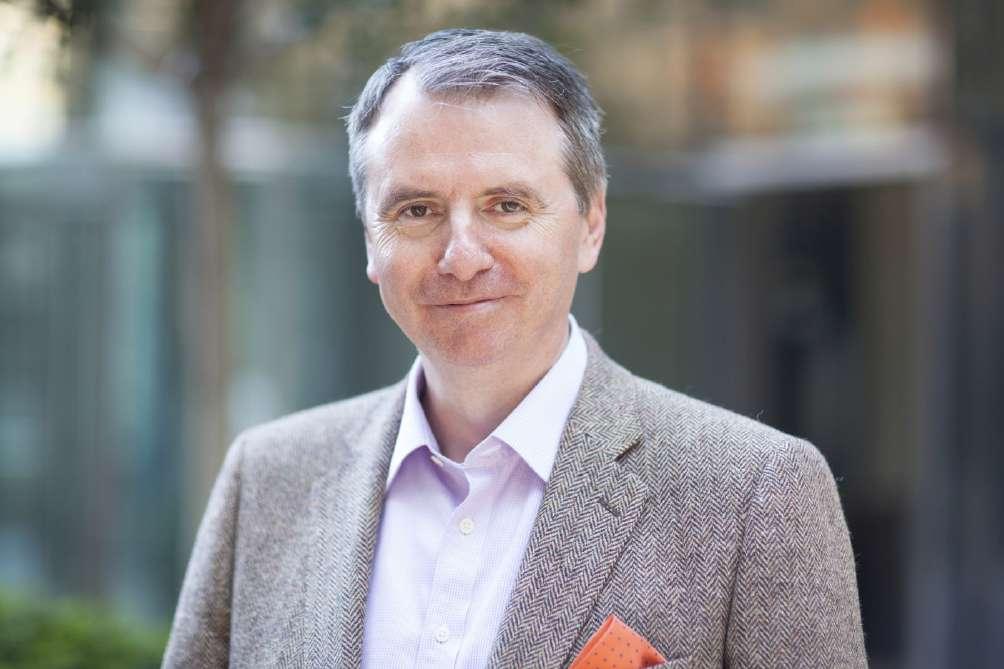
Meta has designed and built the AI Research SuperCluster, which is among the fastest running and will be the fastest AI supercomputer in the world when it is fully built out in mid2022. Meta researchers are using Research SuperCluster to train large models in natural language processing, NLP and computer vision for research, with the aim of one day training models with trillions of parameters. Research SuperCluster will help Meta’s AI researchers build new and better AI models that can learn from trillions of examples. Meta has
been committed to long-term investment in AI since 2013, when Meta created the Facebook AI Research lab. High-performance computing infrastructure is a critical component in training such large models, and Meta’s AI research team has been building these high-powered systems for many years.
Pure Storage has been working with the Meta team since 2017 and that was the initial deployment of the FlashBlade technology. Since that time Pure Storage has been developing stronger engineering links with Meta. The Meta team chose to go with Pure
Storage because the vendor was able to demonstrate years of working together successfully. This was not just on the engineering side, but also on the support and the professional services and all the other relationships that go with that when you build a system of that scale. Pure Storage already had that advantage of being the incumbent and having demonstrated those capabilities.
Since 2020 Pure Storage has been working with Meta to develop the Research SuperCluster, which is a partnership primarily between

Pure Storage, NVIDIA, Penguin.
The aim of Research SuperCluster is to become the world’s largest AI computer over time and to help the Meta scientists work on some of the more challenging problems they have around computer vision, language processing, and a mixture of other technologies that are being used more widely in learning systems and intelligent systems today.
The way machine learning technology works in general is that the larger the system is, the more powerful it becomes. And dividing up into smaller segments is perhaps less appealing to scientists unless they are working
on a smaller training model.
The power of the system becomes much more strategically capable once all of the NVIGIA GPUs are used against a single model that has been trained and developed with enough calibration points. The bigger problems are the ones that the Meta team hopes to solve with the Research SuperCluster rather than specific and smaller ones.
The project to build, create, deploy the system itself is fascinating from a number of different dimensions. Meta already had a datacentre built for exactly this purpose. So Pure Storage knew that fitting into the
Another key decision point was availability. Some of the machine learning jobs and some of the training models take weeks to complete and they cannot afford to have a pause, reset, restart in that timeframe.
constraints of physical space as well as power density, floor space, tile space, were already set in stone, and could not be changed.
What Pure Storage essentially ended up with was the decision to build a scalable, repeatable system that could be expanded in exactly the same way as the initial deployment. Building from an initial 250PB of capacity with six or 7,000 of NVIDIA A 100 GPUs and then repeating that in the same facility by expanding the capability.

So the requirement was designing for scale, designing for resilience, as well as making sure that everything fits within the metrics of traditional datacentre requirements in terms of power, space, cooling, density. But also leaving room to grow.
The ambition is to reach an Exabyte of model data, but also to get up towards 16,000 NVIDIA GPUs in this system as well. All of which drives specific requirements on the storage side in particular for the density and the actual bandwidth density, performance density and power density. Pure Storage had very lengthy discussions with the Meta team in terms of fulfilling those requirements.
“The Meta team had produced comprehensive specifications for all of the parameters that Pure Storage had to reach,” points out Alex McMullan, CTO International, Pure Storage.
The real design points came to, can you fit this much capacity into this much physical space, and can you consume this much power while delivering enough bandwidth to feed and sustain all of those GPUs at once. And that was a pretty big design point for Pure Storage. The vendor did have to make some enhancements to its software to help the Meta team reach those goals.
Pure Storage is well known for elimination of complexity. However, the project was unprecedented is terms of scale of
deployment in a single datacentre in a very short period of time. Pure Storage wanted to make sure that this could be done quickly and easily with almost a plug and play type approach for the storage deployments themselves.
“Thinking about all these traditional deployment requirements, and also some of the non-functional requirements that sat around that as well, were part of the major success keys here in the go live,” says McMullan.
One of the important Meta requirements was data security, and the extensive use of encryption, and ensuring that the transfer of data occurred end to end on a fully encrypted state. The privacy and the security requirements for that were quite onerous, indicates McMullan. Pure Storage wanted to make sure they were comprehensively capable of meeting all of those security requirements.
“Those were the big focus for the Meta team in terms of, yes making it more secure but also making it easy to deploy on day one and continue doing so,” says McMullan. “Manageability wise, those are all pretty much standard that we have today, while making it a plug and play kind of capability for deployment.”
Another key decision point was availability. Some of the machine learning jobs and some of the training models take weeks to complete and they cannot afford to have a pause, reset, restart in that timeframe. So the physical uptime of not just the storage hardware, also the networking, the compute layers, the cache layers were all carefully considered in the Meta design. Meta was comfortable with the capabilities, resilience and uptime from Pure Storage.
Research SuperCluster is essentially research and a learning system. It is there to help the metadata scientists and software development teams
The real design points came to, can you fit this much capacity into this much physical space, and can you consume this much power while delivering enough bandwidth to feed and sustain all of those GPUs at once.

learn about behaviours and how they can actually make their own technology better.
One of the big focuses for Meta is natural language processing, which is really aimed at things like voice assistance and being able to have a conversation with an AI machine on your phone or in your car. Those are the things Meta is trying to get better at.
In terms of the data set, the Meta ecosystem is huge, spanning all the way from Facebook application through WhatsApp and Instagram, and a whole range of others that are much more popular.
Research SuperCluster gives Pure Storage a huge data set in terms of looking at how a single collection of machines behaves over time. How the various environments affect the performance, resilience, from everything in terms of chip health all the way through to power supply status. For Pure Storage this is very useful in terms of a field study of a large deployment in a single space. “That gives our engineers a lot more data points to work through,” says McMullan.
One of the important Meta requirements was data security and extensive use of encryption
All of that data remains strongly encrypted and protected end to end in the system as part of the key design of Research SuperCluster itself. This is the way Meta learns and develops and enhances its tool sets.
According to McMullan, the lessons Pure Storage will learn at Meta, will be those of scale and automation. It will be the single biggest deployment of Pure Storage in a single datacentre in terms of physical chip density.
Power density capability, datacentre efficiency, are some of the most important metrics at Meta’s Research SuperCluster. And energy consumption power drain is a huge focus for Pure Storage. Power consumption and power efficiency are two operations Pure Storage looks at most carefully in its systems design. It was one of the major metrics Meta gave to Pure Storage to be able to meet. “Those kinds of metrics are becoming increasingly important,” points out McMullan.
“We do not assume that all of the other phases at Meta will come with us immediately. Pure Storage
wants to just continue to earn that business,” he indicates.
For energy consumption, Pure Storage quotes the highest power levels. But power draw of storage technology in particular, will fluctuate lower than that over time. Pure Storage is working on giving customers a live view of their power consumption.

There is also a trend, according to McMullan, from Pure Storage customers to select power consumption metrics rather than performance metrics, to define a workload. And that is an interesting development that Pure Storage is looking at.
“Energy monitoring has become much more of a forefront discussion over the last couple of years. That is a great thing honestly, because it holds us as vendors to account to make sure that our systems are just as sustainable and as efficient as all the other systems we use around us today,” points out McMullan, about the innovations that lie ahead.
In early 2020, Meta decided the best way to accelerate progress was to design a new computing infrastructure from a clean slate to take advantage of new GPU and network fabric technology. Meta wanted this infrastructure to be able to train models with more than a trillion parameters on data sets as large as an Exabyte — which, to provide a sense of scale, is the equivalent of 36,000 years of high-quality video.
The first generation of this infrastructure, designed in 2017, has 22,000 NVIDIA V100 Tensor Core GPUs in a single cluster that performs 35,000 training jobs a day. Up until now, this infrastructure has set the bar for Meta’s researchers in terms of its performance, reliability, and productivity.
AI supercomputers are built by combining multiple GPUs into compute nodes, which are then connected by a highperformance network fabric to allow fast communication between those GPUs. Research SuperCluster today comprises a total of 760 NVIDIA DGX A100 systems as its compute nodes, for a total of 6,080 GPUs — with each A100 GPU being more powerful than the V100 used in Meta previous system. Each DGX communicates via an NVIDIA Quantum 1600 Gbps InfiniBand two-level Clos fabric. Research SuperCluster’s storage tier has 175 Petabytes of Pure Storage FlashArray, 46 Petabytes of cache storage in Penguin Computing Altus systems, and 10 Petabytes of Pure Storage FlashBlade. When Research SuperCluster is complete, the InfiniBand network fabric will connect 16,000 GPUs as endpoints, making it one of the largest such networks deployed to date. Additionally, Meta designed a caching and storage system that can serve 16 TBps of training data, and Meta plans to scale it up to 1 Exabyte.
A big part of achieving this was in working with a number of long-time partners, all of whom also helped design the first generation of Meta AI infrastructure in 2017. Penguin Computing, an SGH company, Meta’ architecture and managed services partner, worked with Meta operations team on hardware integration to deploy the cluster and helped set up major parts of the control plane.
Pure Storage provided robust and scalable storage solution. And NVIDIA provided its AI computing technologies featuring cutting-edge systems, GPUs, and InfiniBand fabric, and software stack components like NCCL for the cluster.
Successful enterprises tend to grow their businesses over time. As new workloads are added and their data grows, their storage performance and capacity requirements grow.
A typical legacy enterprise storage platform’s life cycle varies but is generally somewhere in the range of three to five years. Ultimately, the fixed storage performance of this legacy system no longer meets requirements, and the business is forced to perform a forklift upgrade to gain access to the newer technologies in controllers and storage media necessary to meet its requirement most cost effectively.
Purchasers of enterprise storage have historically dealt with an upgrade cycle that was expensive, disruptive, inherently risky, time consuming, and strongly driven by vendors’ technology refresh cycles and pricing.
The legacy enterprise storage upgrade cycle is familiar to most storage administrators. An enterprise purchases a new storage array, which includes a given storage capacity that may be expanded over the life of the product, but the maximum storage performance achievable by the system is fixed based on the capabilities of the controllers and the internal array bandwidth at the time the product is shipped. Regardless of how
much capacity may be added over time, the maximum performance potential in terms of storage latency, throughput, and bandwidth does not increase.
Even if a business is not outgrowing the performance of its storage, media density, power consumption, and maintenance costs on older products may become sufficiently onerous to also drive a company to want to upgrade to newer technology. This cycle repeats over time.
The model locks customers into older technology. When a legacy enterprise storage array is developed, it can be designed to include the latest in controller, backplane, and storage media technology. Firmware and software upgrades over the life cycle of the product can provide incremental performance improvements, but customers are locked into the limitations of that technology as originally designed for the life of the product.
For example, much newer higher-performance and more efficient NVMe technologies cannot be most effectively used in legacy systems designed around SCSI. Although capacity can be added, often all drives can be only of the type available when the system was first purchased. Customers do not necessarily have access to major advancements that provide order of magnitude improvements in performance, storage density, and cost.
Forklift upgrades are
disruptive. Moving to the next generation in controller, backplane, and storage media technology requires a completely redesigned array with typically much higher internal bandwidth to take full advantage of performance and density advancements in storage-related technologies. This means that a completely new array must be brought in to replace the existing array, and that often means downtime as well as data migration.
Application and data migration is time consuming and risky. During the upgrade, all the applications and data in the old array must be migrated to the new array. Today, even the smallest enterprises are dealing with at least tens of terabytes of data, and most are dealing with hundreds of terabytes and looking at managing petabytes of data soon if they are not already doing so. Even if data is migrated over high-performance networks such as Fibre Channel, migrating that much data can easily take days if not weeks or months for many enterprises.
Customers may also have extensive snapshot trees and replica libraries that will be lost if they cannot be migrated to the new system. Often, newer systems use a new higher-performance or more efficient on-disk format, so customers can incur conversion risk during the migration as well.
Upgrades are extremely costly. A customer must buy the new hardware and any required software as well as rebuy capacity. Generally, none of the hardware and software from the older array
can be transferred to the new array, so all of the capital expenditure capex must be repeated even if the customer wants just the same basic features x amount of capacity, snapshot, and replication software.
And then, to help this inherently risky process go more smoothly, many enterprises hire outside professional services firms to plan and execute the technology refresh, a decision that can easily add tens of thousands of dollars in
services cost to what is already considerable capital expense.
Delaying upgrades may be even more costly. As legacy systems near their performance thresholds, it becomes relatively more expensive to increase performance further.
More older technology resources are required to meet increased requirements, relative to denser and higherperformance newer technology options. Added older technology resources can bring lower performance and capacity density, making it relatively

more expensive to scale system capabilities with them more devices are needed, which consume more energy and floor space. Maintenance costs also often increase on older systems, providing an additional vendor-driven incentive for customers to look at upgrading to newer technology.
Excerpted from IDC White Paper on Evergreen//Forever Subscription Continues to Drive IndustryLeading Customer Experience as a Differentiator for Pure Storage by Eric Burgener.
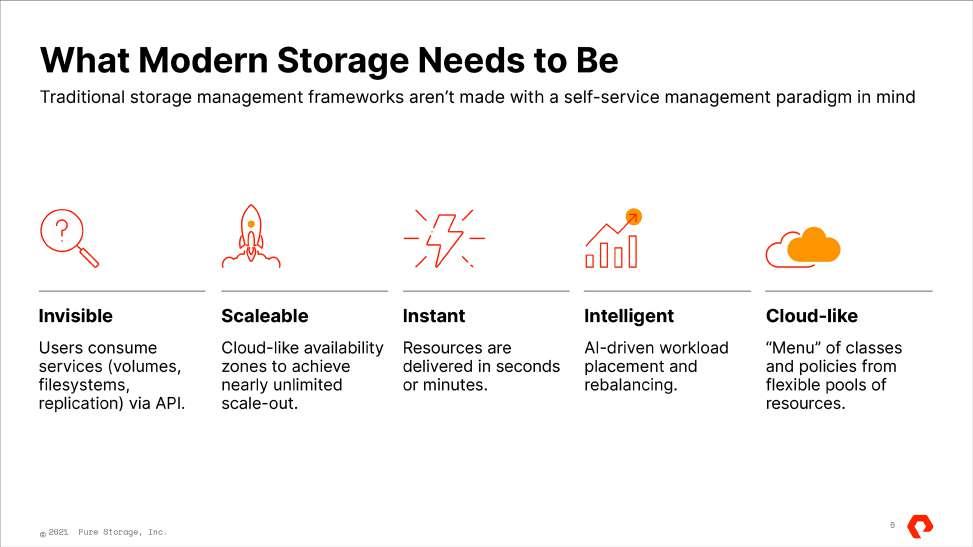
Hydrogen represents a key part of the energy mix on the global path towards carbon neutrality. This emergent fuel is a leading contender to be a sustainable, seasonal energy storage solution. It could be used to balance the short-term intermittency of wind and solar and easily transported using modified natural gas infrastructure.
However, the green hydrogen value chain is set to be more complicated than any current energycarrying vector. It will be broader, more complex, and have more stakeholders. Therefore, optimising green hydrogen production will rely on visibility across the value chain.
The concept of hydrogen energy storage is based on the ability to use excess renewable electricity to run the hydrogen production process. Hydrogen can be safely stored in underground caverns and eventually re-electrified when needed. The stored
hydrogen can produce electricity from a fuel cell or by flowing into a specially designed turbine.

Projects in the 100 MW range have already been installed in the UAE, Australia, and China. The largest project is being developed in Utah, US, and aims to store enough hydrogen in salt caverns to produce up to 1,000 MW of electricity.
But while the utility industry understands the potential for green hydrogen in power generation, it is only just starting to embrace hydrogen’s wider uses and the role utilities could play in an expanded value chain.
As green hydrogen matures, utilities are well positioned to own hydrogen production facilities, transport hydrogen in existing natural gas pipelines, build new hydrogen infrastructure, or own hydrogen-fired generation assets. Other opportunities exist to supply hydrogen for building heating, a blend of hydrogen and methane, or for

combined heat and power plants.
According to a recent global survey of 112 utilities, nearly half of respondents agree that green hydrogen is a significant revenue opportunity but only 19% have a clearly defined strategy for the upcoming fuel.
But while it is uncertain what the green hydrogen value chain will look like in a decade’s time, the utilities industry should not press pause on development. If anything, future uncertainty makes upfront planning even more of a priority.
Each new green hydrogen project teaches more about electrolysis technology and its infrastructure requirements and makes the future that much clearer. The challenge for the industry in general, as well as for individual utilities, is to gain knowledge from current projects, learn more about the most viable technologies, and decide on what role to play in the future green hydrogen ecosystem.
Opportunities exist to supply hydrogen for building heating, a blend of hydrogen and methane.
Nearly half of respondents agree that green hydrogen is a significant revenue opportunity but only 19% have a clearly defined strategy.
The green hydrogen value chain is set to be more complicated than any current energycarrying vector.
Optimising green hydrogen production will rely on visibility across the value chain.
Some utilities are planning to own a significant proportion of the value chain; in other markets, there may be four or five companies involved just in its production, storage, and transport, and in green hydrogen-fired generation.
Green hydrogen’s promise –should the current research be successful – is to help utilities achieve decarbonisation goals while providing reliable and affordable electricity.
More than anything, the long-term viability of green hydrogen will demand a strong data foundation. Knowing when to profitably produce, transport, and store hydrogen or when to convert it into other chemicals will be dictated by many factors.
These include an oversupply of renewables generation, steel, ammonia, or fertilizer prices, or regulated hydrogen reserve levels. A robust data infrastructure will provide all stakeholders with the enterprise-level situational
awareness required to make the right choices at the right time.
Owing to the complexities of the future hydrogen ecosystem, modern technologies capable of leveraging real-time data and analytics will be fundamental to the optimisation of the overall process. End-to-end situational awareness of the green hydrogen value chain will enable stakeholders to make insightsdriven business decisions.
Situational awareness relies on a robust data infrastructure that manages a wide range of data types including market-related, critical operational support, asset management, predictive maintenance, long-term planning, and business process optimisation.
The industry is at the beginning of its learning journey, but there is a risk that its focus will be mostly on developing electrolysis proofs of concept or modifying natural gas delivery systems to transport hydrogen.
These innovative ambitions should be similarly matched with the development of a common information infrastructure and analytics. The future viability of the green hydrogen economy relies on optimised data flow across all stakeholders.
As green hydrogen matures, utilities are well positioned to transport hydrogen in existing natural gas pipelines
The goal is to take a deep-dive into processes and discover touchless paths that require minimal human intervention and increase quality of business.
they do business. Change and innovation are a part of the new normal for businesses across all industries. These practices can range from small – like making shifts to meet new market demands or industry regulations – to implementing larger customer-focused business model innovations that can disrupt the underlying industry or even create an entirely new market.
improvement, focusing on finding better, more efficient pathways in operations. The goal is to take a deep-dive into as-is processes and discover touchless process paths that require minimal human intervention and increase the speed, accuracy, and quality of whatever your business does.
So what can process mining reveal about a business’s current state of operations?
BY JULIAN KRUMEICH Director Product Management ARIS, Software AG.To transform your organization, you essentially need two components: #1 Strategy and plan for the desired new way of working #2 Visibility into your current modus operandi
When it comes to process transformation, you need both a strategy and a clear understanding of where you are today. That is why process modelling, and process mining are critical to your success.
To remain successful in a competitive, globalized world, every organization needs to undergo constant transformation in the way
In the case of digital transformation, the first is process modelling, which sets the bar you want to achieve, and second tells you where you are and what you need to change using process mining to achieve the first.

It is like two sides of the same coin; you need to actually pay with both.
Process mining allows you to take all the process data within your company and mines it for insight on potential

Let us take a process from order to delivery as an example. Customers today demand a highly flexible and digitized customer experience that allows them to change their order up to the last possible moment. When customers cannot do this because of inefficient processes, businesses risk losing customers to a competitor.
Here’s an example: I recently ordered some clothes from a large fashion house and wanted to change the size of one of the items after I placed the order. The process model used by the designer could not support my request to change the size of one piece of clothing and my request caused issues with the shipping and delivery of the entire order. It was a nightmare experience for me as a customer, and from a sustainability standpoint, it created
a lot of waste.
In this case, process mining could help this business identify those touchless points in the process that can be improved to deliver an improved customer experience and reduce waste. Maybe the data analysis will reveal that a tweak in the point-of-sale software can support a customer’s ability to amend an order within a certain timeframe without causing delays.
for digital transformation. They in fact are very closely related and are two sides of the same coin.
It is like two sides of the same coin you need to actually pay with both.
Data analysis will reveal that a tweak in the pointof-sale software can support a customer’s ability to amend an order.
Maybe it will identify opportunities to increase efficiencies in the shipping, deliver, return steps of the process.
A complete process mining analysis can only reveal the realities of a business’s as-is state.
Customers also demand full visibility into their orders.
Automotive orders can take many months to more than a year in times of global value chain disruption.
Once you have acquired insights into how your business operates, the next step is critical to achieving innovation.
Or maybe it will identify opportunities to increase efficiencies in the shipping, deliver, and return steps of the process which will lead to increased customer satisfaction. These are only assumptions, however.
A complete process mining analysis can only reveal the realities of a business’s as-is state.
Order changes are increasingly a necessity not only in the stock-to-order business, but also in maketo-order. Take automotive manufacturers, who must allow customers to change their vehicle configuration until extremely late in the production process, like changing the paint colour by the time it reaches the paint shop.
Customers also demand full visibility into their orders. This applies not only to automotive orders – which can take many months to more than a year in times of global value chain disruption – but to industries with shorter make-to-order timelines like the live tracking of food deliveries.
Once you have acquired the data and insights into how your business operates, the next step is critical to achieving the innovation you want to see throughout your business model: process modelling.
Process mining and process modelling are often thought of as two unrelated practices used
You cannot successfully accomplish a process modelling exercise without the data and insights derived from process mining. Having said, several customers treat process mining and process modelling as siloed entities within their transformation journeys. And if there is anything we know better, it is that removing silos and encouraging free flow of information is what drives innovation, change, improved efficiencies – all things that ultimately make a truly connected enterprise.
If you want to change the way you do business, or even your entire business model, to achieve the innovation you want, there are many stakeholders involved. Therefore, you need a platform that manages the transformation process and delivers the right information to the right people at the right time.
Take the process from order to delivery as an example: If you only change the underlying IT systems without educating everyone involved in the process on those changes, the transformation will cause friction or even worse.
While an increasing number of companies have already implemented process modelling and mining, the majority still do so in isolation, resulting in lower effectiveness of transformation outcomes or even failed approaches. This is similar to companies working in isolated functions rather than processdriven organizations.
For true transformation heroes, it will therefore become best practice to establish an integrated transformation platform to gain fact-based, data-driven process insights as well as planning and rollout capabilities to turn plans into actions and ultimately measurable results.
OpenTelemetry will play a role in accelerating transition to full-stack observability over the next 12 months, providing a straightforward, cost-effective way.
BY JOE BYRNE Executive CTO,
The emergence of OpenTelemetry is a major opportunity for businesses of all sizes, giving them visibility into availability and performance across every single technical element of their IT environment. OpenTelemetry is a vendoragnostic and portable standard for metrics, events, logs, traces, MELT, that turns the collection of telemetry into a commodity.
Rather than having to deploy agents to monitor availability and performance, once applications are deployed in production, developers can now also code health and performance telemetry data collection into their application to generate even more precise data once running in production.
The advantages for the organisations are considerable. OpenTelemetry is the standard that unlocks 360-degree
visibility into any IT environment and, when combined with advanced analytics, AI, and machine learning, it unlocks the potential of full-stack observability. With OpenTelemetry and advanced analytics, technologists can get real-time insights into performance right up and down the IT stack — compute, storage, network and public Internet — from customerfacing applications all the way to the back end.
Organisations in all sectors have begun to see the importance of full and unified visibility into IT availability and performance across their technology environments. They have come to realise that this is the only way to address the soaring levels of complexity that their IT departments are encountering across an ever more dynamic and fragmented IT estate.
Technologists are aware that today’s customers have zero tolerance for poor digital
90% of organisations will be somewhere along their journey to full-stack observability in 2022
Cisco AppDynamics.Half of the businesses surveyed have already begun their transition to full-stack observability
about production times
To date, the critical focus for development teams was to build functionality within the given application as intuitive, engaging, and easy to use as possible. But OpenTelemetry often calls on them to integrate code to deliver critical telemetry data on performance in a live production environment.
This is a significant shift in developers’ responsibilities, and requires that they take a broader approach, ensuring new applications and digital services have the capabilities to collect the required information consistently and accurately.
experience. IT leaders know that a single slip-up in performance delivery could lead a customer to switch to an alternative brand and likely never return. As a result, full-stack observability has become a business-critical priority for organisations.
The latest AppDynamics report, The Journey to Observability, revealed that more than half of the businesses surveyed have already begun their transition to full-stack observability. And 36% plan to do so in the next 12 months. Meaning that, 90% of organisations will be somewhere along their journey to full-stack observability in 2022.
OpenTelemetry is set to play a role in accelerating this transition to full-stack observability over the next 12 months and beyond, providing a straightforward, cost-effective way for technologists to generate greater visibility into their IT environments. But not only can OpenTelemetry transform the way organisations optimise IT performance and deliver seamless digital experiences, but it can also transform the way IT departments themselves operate.
Here are three such changes: #1 Development team concern
#2 Teams can choose the tools they need OpenTelemetry gives individual teams whether they be ITOps, CloudOps or SRE more freedom to choose the tools they want to use when managing availability and performance while working from the same telemetry data. OpenTelemetry prevents vendor lock-in and delivers data freedom, to be duplicated and sent to multiple places at once. So, data can go to specific opensource tools such as Jaeger for some teams, as well as to enterprise-grade observability solutions such as AppDynamics for others.
Teams can pick the best tool for their own specific requirements in an easy, flexible, cost-effective way, and are no longer restricted to monitoring tools that may not provide the visibility required for a given project.
#3 Processing and correlation of OpenTelemetry data OpenTelemetry can collect data from right across the IT stack, but it does not group data together and deliver more holistic insights into availability and performance issues and causes. So, for IT departments to reap the benefits of OpenTelemetry, they must find
a way to consume and process the raw telemetry data and correlate it with other sources to gain business-focused insights and take prioritised actions.
Most organisations will continue to deploy agentdriven observability to monitor and optimise performance on mission-critical applications. Today, these solutions provide deeper insight than OpenTelemetry can for now. Also, whereas OpenTelemetry is focused purely on the tech domain, the best full-stack observability solutions provide real-time insights at a user and business level, enabling technologists to make decisions and prioritise actions based on customer and business impacts.
So, IT departments must ensure they have the right fullstack observability platform in place to integrate the vast volumes of OpenTelemetry data they will be generating, and to provide the advanced analytics required to make businessfocused decisions.
According to our recent research, 85% of technologists believe 2022 will be a pivotal year in their journey towards full-stack observability. They know they must continue to expand their monitoring capabilities over the next 12 months in order to generate greater visibility across their IT estate, particularly within microservices, container and serverless environments. OpenTelemetry is now key to accelerating this shift towards full-stack observability, providing a level of visibility into the IT estate that simply has not been viable for most organisations until now.
Those IT departments that can successfully integrate OpenTelemetry into their observability strategies have a unique opportunity to deliver game-changing impact for their organisations.

Kandima stands for smart, playful, rooted, and responsible hospitality. This 3-kilometer island resort is a place with an authentic Maldivian soul. Kandima is part of the hospitality group Pulse Hotels and Resorts, and caters for guests of all ages: families, couples, groups of friends, solo travellers and honeymooners.
The 264-room Kandima Maldives, island resort has something for everybody. With one of the longest outdoor pools in the Maldives, football pitch, tennis and volleyball courts, aquaholics water sports and dive centre, art studio and many more facilities, there is plenty to keep everyone occupied.





Luxury Italian carmaker, Automobili Pininfarina has appointed Nine Motors as its official retail partner in Saudi Arabia. Nine Motors will be responsible for the sales and service of Automobili Pininfarina’s awardwinning Battista. The pure-electric hyper GT is making its first visit to the region in November for clients to experience first-hand.
The pure-electric Battista hyper GT, the most powerful Italian car ever made, is crafted over more than 1,250 hours per piece in Cambiano, northern Italy. No more than 150 examples of the Battista will be commissioned and handcrafted for customers worldwide. With a total of 128 million interior combinations alone, the new hyper GT promises new levels of tailoring, and Nine Motors will assist clients as they personalise the Battista to suit their individual taste.
Saudi Arabia is one of the most important markets in Automobili Pininfarina’s retailer network strategy and is a country fast adopting a sustainable future thanks to its Vision 2030 strategy.





